WOODEN SAILBOATS FOR SALE
Click image to view more information.
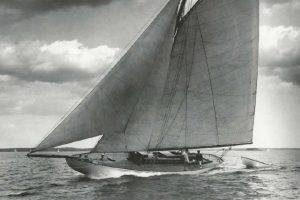
Modern classics, built by hand, these wooden boats evoke the timeless elegance of the tradition of rowing. But don’t be deceived by the romantic exterior. While the Mahogany Series may convey all the charm of the days of yore, it’s still not as much about winning good looks as it is about good looks winning!
Renowned Levator craftsmanship incorporates high-performance composite materials and forward-thinking design to ensure that the heart of a winner beats within these working tributes to the aesthetic and heritage of a sport that is also a way of life.

- Designed in 1969 by Jürgen’s father, Jakob Kaschper
- Maintenance free white composite decks
- Fully adjustable welded-aluminum anodized riggers
- For traditionalists who also want modern options

- All-wood, classic Vak-Shell design
- Premium vacuum applied epoxies
- Hand-rubbed polyester mirror finish
- Stunning “AA” mahogany decks

- Classic looks, best-in-class tech
- Tough hybrid Carbon - Mahogany veneers
- Compression molded Carbon Honeycomb structure
- Choice of standard or high speed hull

- The wooden racing single reinvented
- Original Instep designed Cockpit
- Sculpted Carbon Fiber wing rigger
- High strength mahogany/composite construction

- Call for more information.

© Levator Boatworks Ltd. Anytime: (519) 268-7773
- Facebook Fan Page
- Our Videos on YouTube
- Follow us on Twitter
- Our Videos on Vimeo
Why Levator
Personalize
Testimonials
Mahogany Series
Racer series
In-step series

Mahogany Series: Essence Of A Racing Shell.
Original Vak-Shell
The wooden boat lives!
Since 1969, the Original VAK Shell embodies the purity of rowing boat design and function
We thank and salute all the men and women who made this boat a success - past and present
There is a unique feeling a sculler experiences with the first strokes taken in classic wooden racing single. Moving with grace over the water striking perfect balance. The VAK Shell is a timeless expression of wooden boat building. Two versions are available, which offer the same performance and construction in a choice of hard decks.
- The Original VAK Shell has durable white surface gelcoat decks to keep the original look
- The Legacy has aesthetically beautiful mirror finished mahogany decks
The goal of this boat design is simple – Keep it honest, keep the wooden boat alive.
"I redesigned the VAK Shell because there were people who wanted to have a traditional wooden shell. These are people who refuse to have Kevlar in their boats, they don’t want carbon encapsulating the ribs. They want to have a wooden boat. Period."
The VAK Shell is the classic wooden boat. Now made with many internal modifications to improve it’s durability to bring it forward using the best in epoxies, coatings and finishes. The 2 ply hull is built with mahogany and spanish cedar veneers molded under vacuum pressure using epoxy resins. The internal structure and cockpit, includes "AA" mahogany, sitka spruce, ash and spanish cedar. The final finish is comprised of 6 coats of spar varnish to the cockpit to compliment the unsurpased hand rubbed polyester mirror surface to the exterior hull.
Advancements to the cockpit include a built in lifting handle to the stern of a re-engineered high strength single unit ash rigger knee. The standard wooden double action seat rolls on fully adjustable tracks. Traditionalists can have it pure, but there are options available to bring forward new advances in boatbuilding and sculling. The VAK shell includes a choice of traditional wooden clogs or velcro release rowing shoes. It is built with a concealed NK Speedcoach wiring harness for rowing electronics as standard equipment.
Riggers are welded aluminum, anodized, and offer full adjustment, complete with Concept2 oarlocks. The standard pins are stainless steel, or for saltwater enviroments a titanium pin upgrade is available. The sturdy A-Frame design allows for easy accessibility when lifting and launching the boat. Mounting the rigger is fast and simple. The design allows for compact storage while in transit to regattas or a favorite sculling location.
Today the the Original VAK Shell brings the rare experience true afficiandos are looking for. This classic shell first designed and built in 1969 by Jakob Kaschper, brought early acclaim to the Kaschper name, remains the cornerstone of son, Jurgen's boat building career. As owner of Levator the VAK Shell is his commitment to the future of the wooden boat.
On the water the VAK Shell promises performance. Its legacy includes winning many local and international events since its introduction. This heritage bring the same design elements to the Racer Series composite boats. Stabilty, comfort and speed, guarantee ideal sculling for the novice or expert alike.

Legacy Mahogany Series
Excellence mahogany series.
A modern expression of the classic wooden boat!
In a class of its own the Levator EXCELLENCE is an uncompromising embodiment of design, materials and aesthetics, bridging the traditional with the contempory. The essence of Levator wooden boatbuilding is the EXCELLENCE – a boat with lines and form that speaks instantly to the viewer:
"From a design standpoint, the Excellence has the most pull. It’s classic design; looks like a wooden single should look like and makes sense to people."
The look of the boat is only part of it’s excellence. Our goal was to develop a shell that moves beyond nostalgia by combining composites with a wooden exterior to enhance its inherent characteristics: strength, beauty, and longevity.
By using advanced materials and techniques create the ablilty to eliminate the age-old problem in wooden boats of rot and cracking. This achieved in the hull by combining mahogany veneers with impact resistant Kevlar fabric and high performance structural glass fiber(s-glass) under vacuum pressure in an epoxy matrix. All internal stringers are compression molded carbon fiber. All interior surfaces are of synthetic fiber. Further enhancements which bring synergy to the design include hard decks constructed of nomex honeycomb core. The core is sandwiched between a bottom layer of s-glass and a top layer of fibrer reinforced mahagony veneer which is bonded using epoxy adhesive under vacuum pressure. The rigger knees are fully encapsulated with carbon insure minimal flex at the catch. Attached to the knees are light weight Aframe riggers complete with keyed titanium pins providing simple span adjusment using the turn of 1 wrench. Standard equipment includes a Dreher composite roller bearing seat and a fully height and angle adjustable footstretcher. All aluminum components; rigging tracks and welded alumuminum footstretcher are hardcoat anodized ready for saltwater use.
This modern interpretation of the wooden boat combine simple clean lines with building techniques realized in the 21st century:
"I had one client that had rowed a wooden boat and he wanted a wooden boat; that’s all he wanted to look at. But after we talked it over and looked through the options and what he wanted to do with the boat he ended up settling on an Excellence boat where Kevlar and mahogany are brought together for a more durable boat that can withstand more punishment. He liked the blended aesthetic of the carbon ribs with the wood, where the whole thing works. He took a look at the boat and said, “Yes, I like how it looks, it’s beautiful, it’s functional, it’s current.” It’s not a steam-bent cedar boat from the 1930s or something. It’s a boat that could only be built today."
Building a boat that integrates classic wooden boat design and advances in new materials is a challenge in itself:
"Fifty years ago guys could not build the boat that I build today because the technology, the materials, the epoxies, the resins, the finishes weren’t there. The wood was there, but there is a here and now that is a part of these boats, which makes them truly unique. And these advances actually make it more difficult for me to build. It’s not getting easier to build these; they are much more complex."
The combined result of this intersection between classic and advanced design and modern boatbuilding using advanced composites is the EXCELLENCE. A new definition of a fine racing boat which is sure to stimulate and challenge a skilled sculler with each stroke on the water.
Flight Mahogany Series
Step into the future
The Flight was designed with deliberation to break all conventions in traditional wooden shell design. The motivation to do this stemmed from a revolutionary concept brought to Levator in 1996 by Mike Elmitt a Professor of Architecture at the University of Waterloo/Ontario. This new idea became the focal point of reconsidering the most fundamental aspects of a wooden racing single.
The INstep solved a complex problem with all singles and scullers; stepping in and out of a narrow boat without harming the boat or the sculler. The solution was to lower the centre portion of the seat deck to the keel. Lowering the center of gravity gives maximum stability and also reduces the amount of tuck required to get in and out of the shell, thereby lessening strain on hips and knees. The INstep makes space for conveniant storage of water bottles and integrates a lifting handle located on the balance point of the shell. The lowering of the seat deck demanded rethinking and reengineering of the entire cockpit and rigging system.
From a design standpoint the resulting changes became a contrasted blend of the traditional and modern creating an authentic statement, challenging the eye of the beholder. The ulitmate focus on any racing shell single is speed. This characteristic is enabled using aerospace high modulus areospace carbon fibre in the hull. The molded INstep seatdeck unifies the monocoque design structurally and visually. Molded Mahogany decks and splashboards further unify. From a performance standpoint the Flight parallels Levator’s high performance competetitor the Torque. These attributes make it a source of pride for the builder, as well as a challenge:
"Cerebrally the Flight single, that’s the top of the mountain for me. It’s absolutely my crowning achievment as a boatbuilder. There’s not a lot of pieces in it, it’s simple - the form, the shape, the components – but it seems to take an incredible amount of time to build. It’s always a bit of a mystery. I look at it and say, “Why is this taking so long?” Moulding these parts, getting the flow, getting the design and plasticity and everything connected takes a long time but it’s worth the effort to feel it on the water"
Part of the challenge is the Flight is a blended boat of mahogany and composite materials:
"There are big pieces of moulding that we are bonding veneer to honeycomb. The inside of the boat is all composite. The keelstringer is a moulded triangle, it’s an invention; that’s what it is. Building these is not just going to the lumberyard, buying a bunch of wood and putting it up on the bandsaw and then whacking it together."
The Flight is as much an intrument as it is a fine racing single. The INstep required removal of the traditional rigger knees. A carbon wing was sculpted to keep in tune with the original design concept. The wing is skinned with the same carbon used in the hull. Internal reinforcement consists of multilayers of specialized unidirectional and triaxial fibre. Final strength and flexural properties are achieved by tempering the parts through baking at 250 degrees F. The wing mounts to its seperate carbon flanges bonded to the interior against the gunnel stringers and fibre reinforced mahogany splashboards. As with the EXCELLENCE, the Flight is saltwater ready to row with titanium rigger pins. The multi-adjustable welded footrest and adjustble tracks are hardcoat anodized. A Dreher carbon roller bearing seat and a concealed NK Speedcoach wiring harness is standard.
Unlike any other boat in the world ...
Why reinvent the wheel?....
March / April Issue No. 297 Preview Now
The Pacific Class Sloop
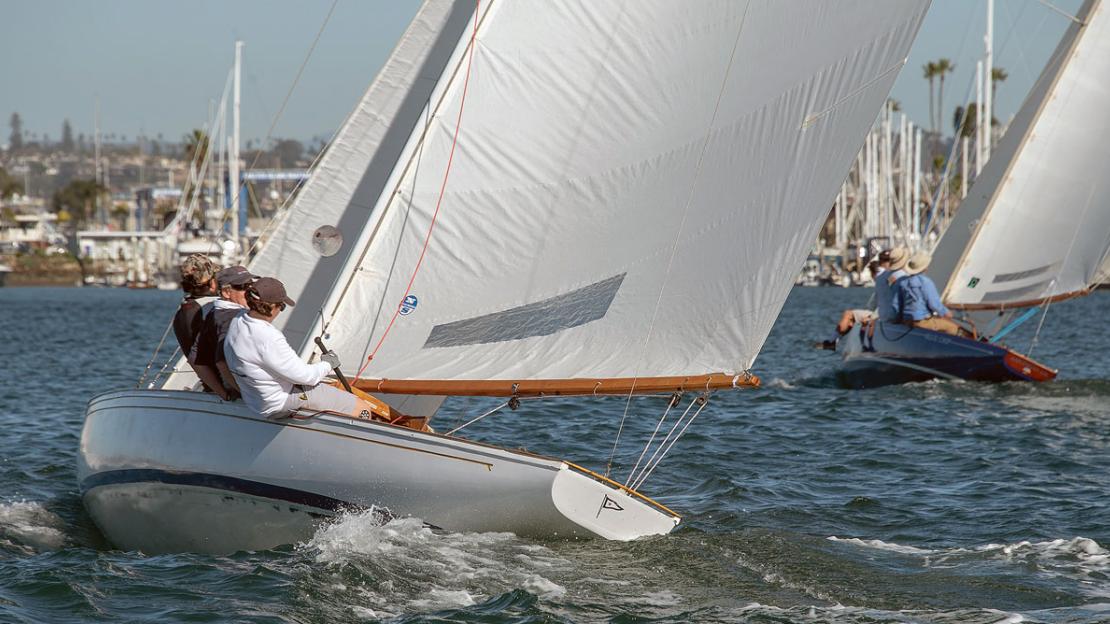
The crew on ROUTE 66 hikes hard during the final charge to the finish line of the first 2019 Sun Series Race. To leeward of them is BLUE CHIP (No. 43), also recently restored by her owner, Chris Frost. BLUE CHIP was owned by the PC Class’s designer, Paul Kettenburg, and Frost sailed on her as a teenager. Many PCs have been handed down to owners who are willing and able to oversee restorations.
L egend has it that on the storied waters off San Diego, California, where Dennis Conner defended the AMERICA’s Cup not so long ago, there has been an unusual gathering of what some in nautical circles call “angels.”
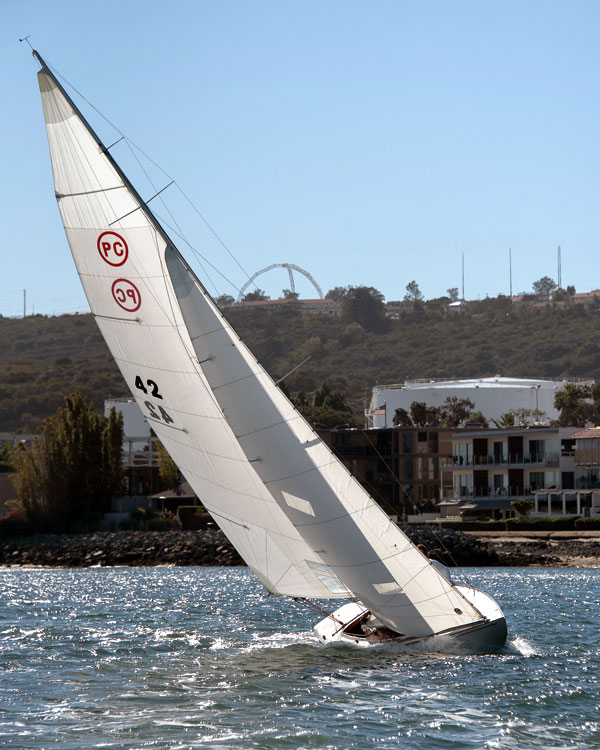
In San Diego, California, the Pacific Class (PC) sloop ZEST, built in 1942 and recently restored, works to windward with owner Steve Brownsea at the helm. The first PC was launched in 1929, and the class is still actively raced.
Those angels have built, sailed, and nurtured a class of large and sleek knockabout sloops known affectionately as “PCs.” The Pacific Class was the first one-design racing sloop constructed for Southern California waters, and over the past 90 years this class of about 80 boats has sailed into yachting mythology. WINGS, hull No. 8 and perhaps the oldest hull in existence, is on display at the San Diego Maritime Museum.
PCs have attracted an enthusiastic following for about four generations. Today, 18 of them line up in their slips on E Dock at the San Diego Yacht Club (SDYC) like a concours d’élégance of trophy boats, and another dozen lie at various locations around San Diego. On weekends they raise their sails for jaunts or races around San Diego Bay. When first built in 1929, the PC sloop was conceived as a club and class racer within the price range of sailors of ordinary means who could maintain their own boats. But today a restored PC can cost you well over $50,000, which is no modest outlay for a daysailer.
I asked Rish Pavelec, who has rescued quite a few PCs, what the boat’s big attraction is. He paused, then his voice began to almost purr as he spoke. He said the PC looks just like the sailboat you see in your dreams. “It looks the way a sailboat should look.”
Dr. Alex Caldwell, who grew up sailing and racing PCs with his parents, is a glider plane enthusiast. He says that sailing his late father, Bud’s, Pacific Class ONION TRUCK is as close as you can come on the water to piloting a glider. “It’s like soaring.”
A fter hearing such testimonials, I thought I owed it to myself to go in search of the magic. So it was on a windy March afternoon in San Diego that I found myself in the cockpit of PC No. 16, DAWN, built in 1934 and recently restored. Our crew of four included three sailors who are among the current angels shepherding the PC toward its centennial. Aboard and calling the shots was DAWN’s restorer, the Pied Piper of San Diego’s wooden boat renaissance, C.F. Koehler. He’s a 54-year-old wooden boat guru, president of the family Koehler Kraft yacht yard, professional skipper, and inspired jazz trumpeter. Amanda Del Bello and Danielle Richards, two of the “young bloods” in the PC fleet, were tending the jib.
DAWN has no engine, and freeing her from her berth deep amid a warren of docks and boat slips seemed to me like an accident waiting to happen. So I was not all that excited to take the helm. But as soon as we shoved off the dock and Koehler began hoisting the mainsail, I felt DAWN’s helm come alive in my hand. She pivoted through the twists, turns, and narrow fairways like a smart, little junior racer a third her size.
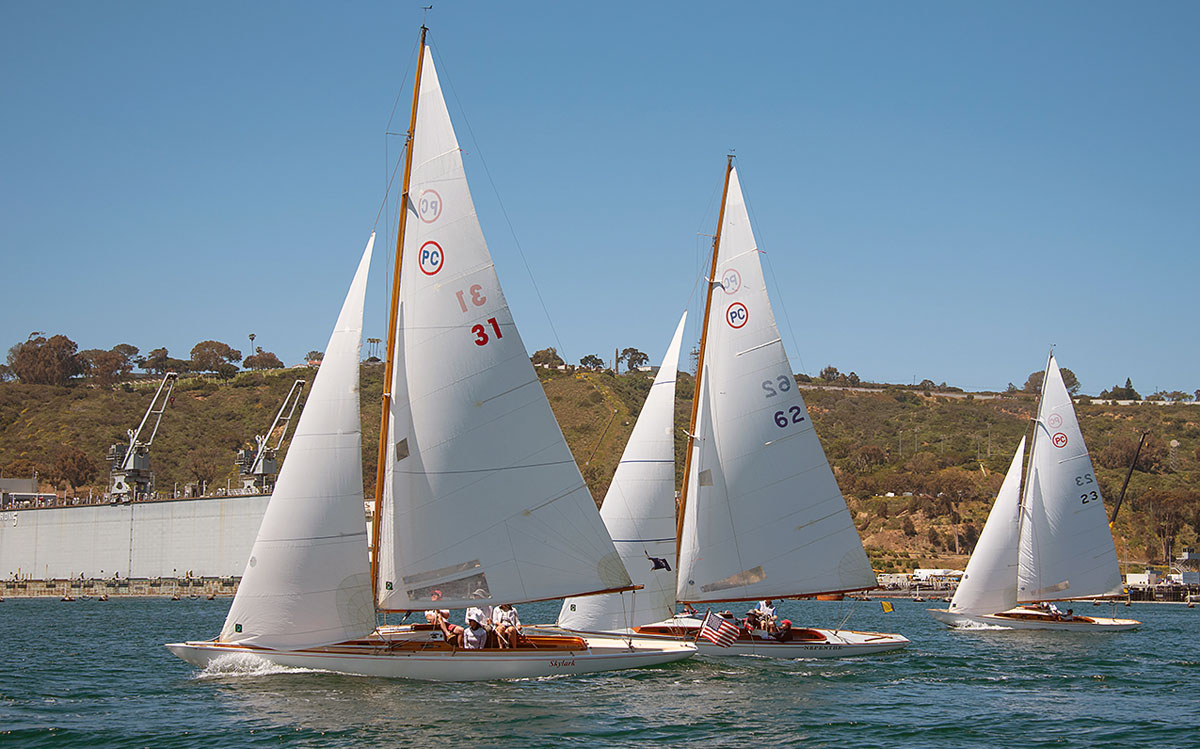
SKYLARK (No. 31) was skippered by Commodore Jerelyn Biehl in the 2019 San Diego Yacht Club (SDYC) Opening Day race. The boat had a doghouse, which was removed to enlarge the cockpit. NEPENTHE (No. 62) and ROUTE 66 (No. 66, though the sail says 23) are in the background.
In the open waters of San Diego Bay, she really showed her nimbleness as she slalomed amid the Saturday afternoon boaters motoring about in swarms. Folks on other boats cheered as we scooted by them with the crisp, modern-yet-traditional Oceanus sails set wing-and-wing. Heading upwind in puffy conditions, DAWN tacked with surety and swiftness, then heeled into the gusts and took off like a thoroughbred. She skimmed over powerboat wakes like they weren’t even there. No question, I felt the truth of what Caldwell had told me. Reaching and off the wind, sailing a PC was like soaring. Going to windward in DAWN had all the thrill of driving a classic roadster on a twisty highway.
No wonder someone shouted at us, “Rock ’n’ roll!”
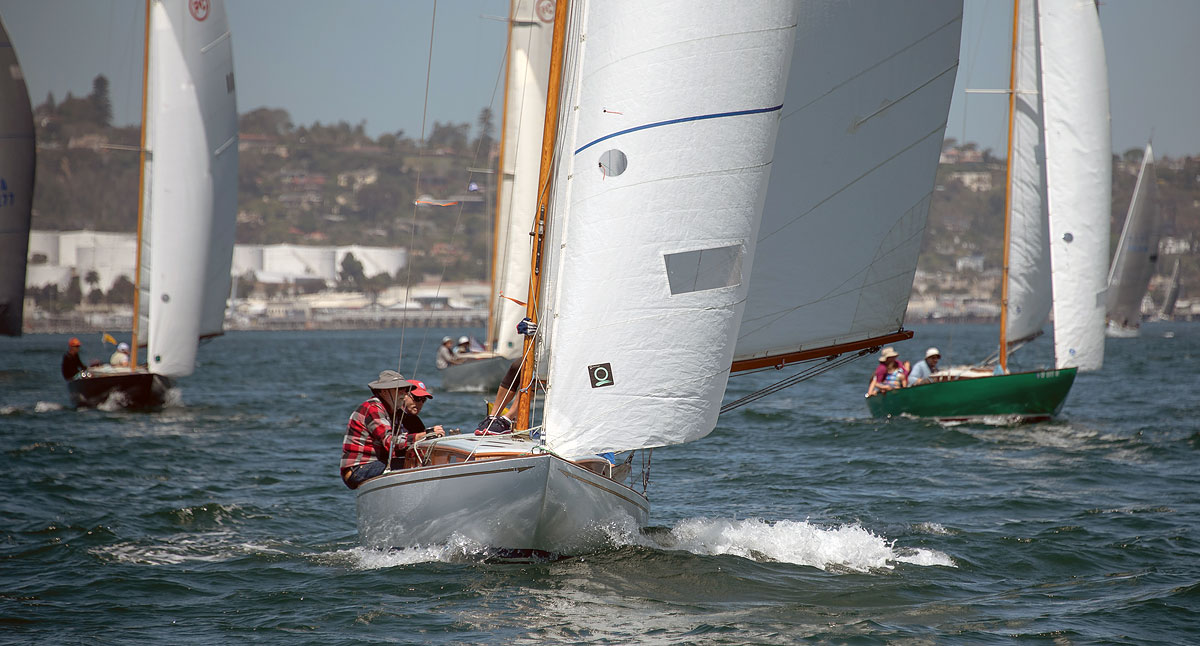
NEPENTHE (No. 62) leads the fleet at the 2019 SDYC Opening Day. She is owned by Rick Arneson, who is new to the fleet and also an avid Snipe sailor. In the background from left to right are FIRST FIDDLE (No. 11), JEWEL (No. 35), and ONION TRUCK (No. 21).
P acific Class sloops did not spring from the drawing board of a celebrity yacht designer of the 1920s, the likes of Nathanael Herreshoff, Starling Burgess, or B.B. Crowninshield. Rather, PCs came from a local San Diego builder named George Kettenburg, Jr. (see sidebar, page 36), whose shop was then a backyard operation according to Danielle Richards, the current class secretary. She’s got an impressive history of class racing in all sorts of traditional and modern dinghies, but smiles when she confesses her preference for PCs and their improbable origins. A native San Diegan, she takes more than a little pride in the fact that PCs are homegrown.
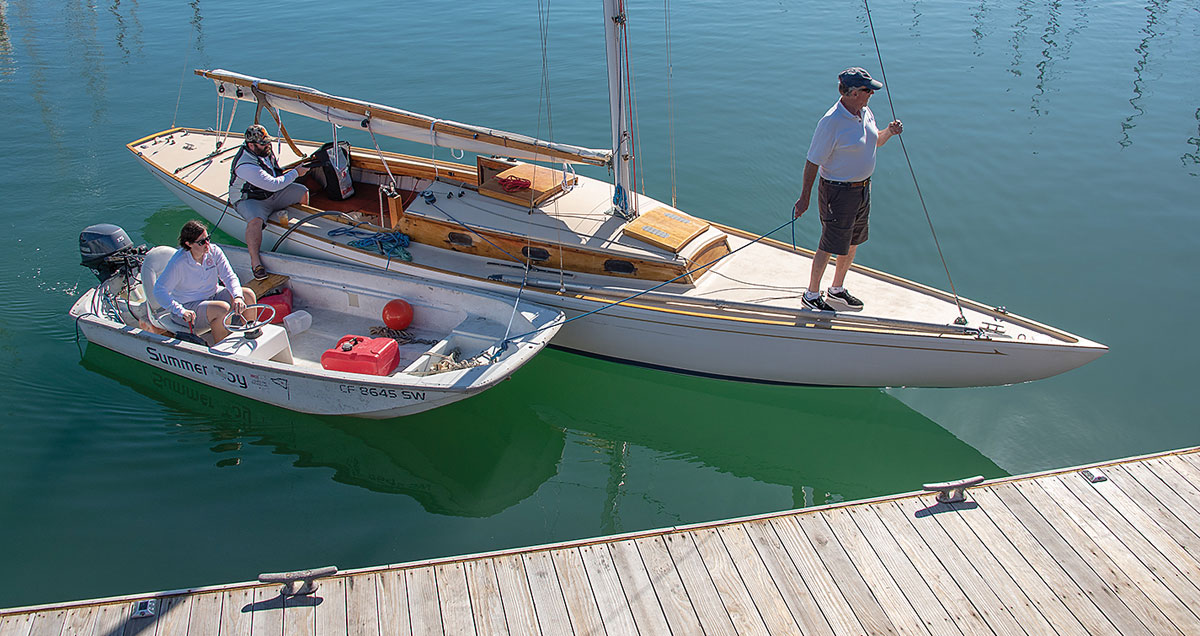
The ROUTE 66 crew maneuvers to the dock before the first of the 2019 Sun Series Races. The boat’s cabinhouse extends forward of the mast, which means she was built after World War II.
Pavelec, who in addition to rescuing the boats is a PC owner and an SDYC member, sets the scene on the club’s website: “The year was 1929. Herbert Hoover was president of the United States. The stock market had crashed. Within the last 10 years, the population of San Diego had exploded from 74,361 in 1920 to a whopping 147,995 people by 1930. On the waterfront in San Diego Bay, the now-popular Shelter Island was still a natural bar of sand, accessible only by boat. Those taking the trolley out to the commercial basin area or Roseville could see Star-boats, Starlets, R-boats, 6-Meters, and such racing in the bay.”
Aboard one of those boats was Joe Jessop, a nationally known and well-traveled regatta competitor with a soft spot for Herreshoff’s S-class daysailers (see WB No. 267). According to PC fleet lore, Jessop came back to San Diego after some East Coast racing in Herreshoff boats and asked why there was no boat specially built for Southern California winds and waters that could compete in the S class.
In the summer and fall of 1929, a collection of avid SDYC racers pondered this question as they searched for a one-design boat better suited than S boats (with their rather blunt ends) for the unusual combination of moderate winds but choppy seas and ocean swells typical of Southern California. The racers admired the long, lean look of a 22-square-meter imported from Norway. But they were truly infatuated with the smaller and less expensive Starling Burgess-designed Atlantic class sloop.
Just as they were placing an order for four Atlantics, Kettenburg, then 25 years old, made the yachtsmen an offer they couldn’t refuse. He could build a boat with the sail-carrying ability and sweet overhangs of the meter boat and the light displacement of the Atlantic class. But unlike the Atlantic’s open cockpit, Kettenburg’s boat would have decking and a cuddy cabin for safety and comfort during open-ocean sailing. The cuddy would also give the crew a place to sleep aboard when taking the boat to race up the coast at Dana Point, Newport Beach, Long Beach, Los Angeles, or further north. Kettenburg said he could build his prototype within the rules of the S class and at absolutely no cost to the yachtsmen.
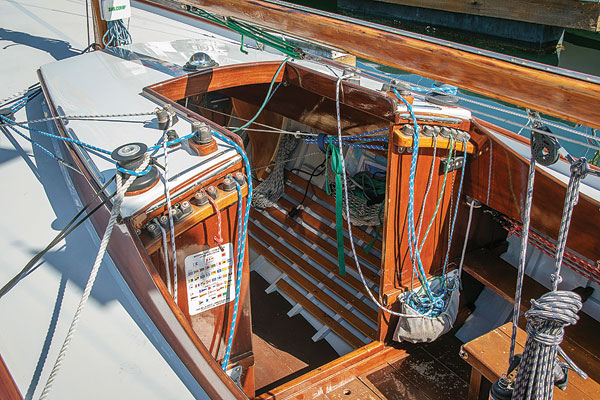
LA CUCARACHA (No. 14, pictured here) and some other PCs have elaborate control consoles on either side of the companionway; others are rigged minimally.
The young shipwright promised that he and Jessop would race his prototype against the 22-square-meter and local Herreshoff R-boats. If the Kettenburg boat won…well, how about some contracts? He thought he could sell the boats for $2,100, complete with sails—two-thirds the cost of an Atlantic. He would call his boat the Pacific Class in bold defiance of the dominance of East Coast designers and builders in yachting circles of the era.
With only a high-school education and no training as a naval architect, Kettenburg drew on his exceptional eye for speed, beauty, and sail-carrying qualities and got to work carving a half model of his concept for a Southern California inshore racer. After lifting the offsets from the model and laying the lines out on the lofting floor, he had the plan for a sleek, light-displacement, fin-keel knockabout sloop with low freeboard and long overhangs. The hull measured 31′10″ LOA, with an LWL of 21′ and a beam of 6′8″. The draft was 4′6″, and the displacement was 5,000 lbs. The fractional sloop rig carried 385 sq ft of sail.
Four months after carving the model, Kettenburg had built a boat that stood out not only for its light displacement and swift looks, but also for its light construction. He built the keel of Douglas-fir. Frames were steam-bent white oak measuring only 11/8″ × 11/8″ on 8″ centers. Planking was ¾″ Philippine mahogany fastened with bronze. The decks were spruce. The boat carried about 2,450 lbs of outside lead ballast. Kettenburg named his creation SCAMP.
Jessop and Kettenburg sailed SCAMP in a test race, where she dominated the R-boats and the 30-square-meter. The SDYC had its new class racer. Despite the stock-market crash of October 1929, what was to become Kettenburg Boat Works had orders for PCs and there was an organized class association. By 1931, Kettenburg had built six more PCs for customers at the yacht club.
At this point, Jessop, acting as both a promoter for Kettenburg and an emissary of the SDYC, challenged the East Coast S-boat sailors to a four-boat match race in Honolulu. The PCs won, and they grabbed headlines for their victories.
Hawaiian sailors purchased the four PCs that raced in Honolulu, and their former owners placed orders with Kettenburg for new PCs. Additional orders started arriving from up and down the West Coast. By the start of World War II, Kettenburg had built 35 of the boats, and other builders on the West Coast and Hawaii were soliciting permission to build them.
As time passed, the interior and deckhouse on the PC evolved. Kettenburg added a forward V-berth and small galley to some boats. He also tried a raised doghouse to improve headroom, but the concept was short-lived.
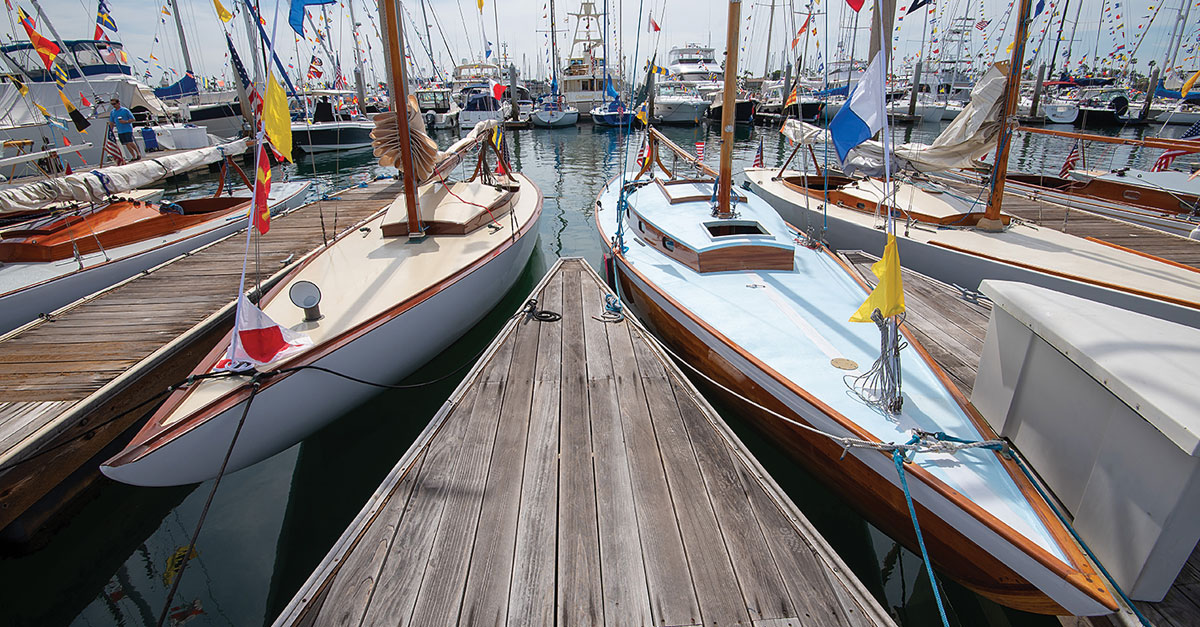
It’s easy to see the small variations in a PC’s deck and cabin arrangements when TRADEWIND (No. 27), DAWN (No. 16), CARL M. EICHENLAUB (No. 84), and YANKEE (No. 72) are lined up and dressed for the SDYC Opening Day festivities.
A huge U.S. market for recreational watercraft followed WWII, and the PC was once again in high demand. With the orders coming in, Kettenburg ruminated on what he had learned from building his fleet of PCs and decided he could improve the rig by changing the headstay position and a few other details. He also stretched out the deckhouse and added a head to make PCs at least seem as if they could be potential weekend cruisers.
There was one other big change. Having built scores of small boats for the Navy during the war, Kettenburg Boat Works was now a “production” boatbuilder, and the yard’s construction team had learned about the efficiencies of building hulls upside down on a jig, so Kettenburg began building PCs this way as well. The company also licensed construction of a few hulls to a builder in British Columbia. Some bare hulls were built in San Diego, then shipped upside down via rail to a Seattle builder to finish.
The last Kettenburg PC, No. 83, rolled out of the shop in the late 1950s. But PCs did not vanish with the fiberglass revolution in boatbuilding. According to Pavelec, perhaps as many as 30 PCs are still actively sailing.
A s one generation of PC owners faded away in the 1990s, a new gathering of angels comes into the picture—namely Bud Caldwell (Alex Caldwell’s father), Morgan Miller, and AMERICA’s Cup skipper Jack Sutphen. They began scooping up PCs that were being neglected. “They had a habit of inviting people for a nice Saturday sail in a PC,” says Richards, amid sheet-handling aboard DAWN, “and when the sail was over and the guest was gushing about the ride, these guys would say, ‘and by the way, here’s your new boat. Welcome to the fleet.’”
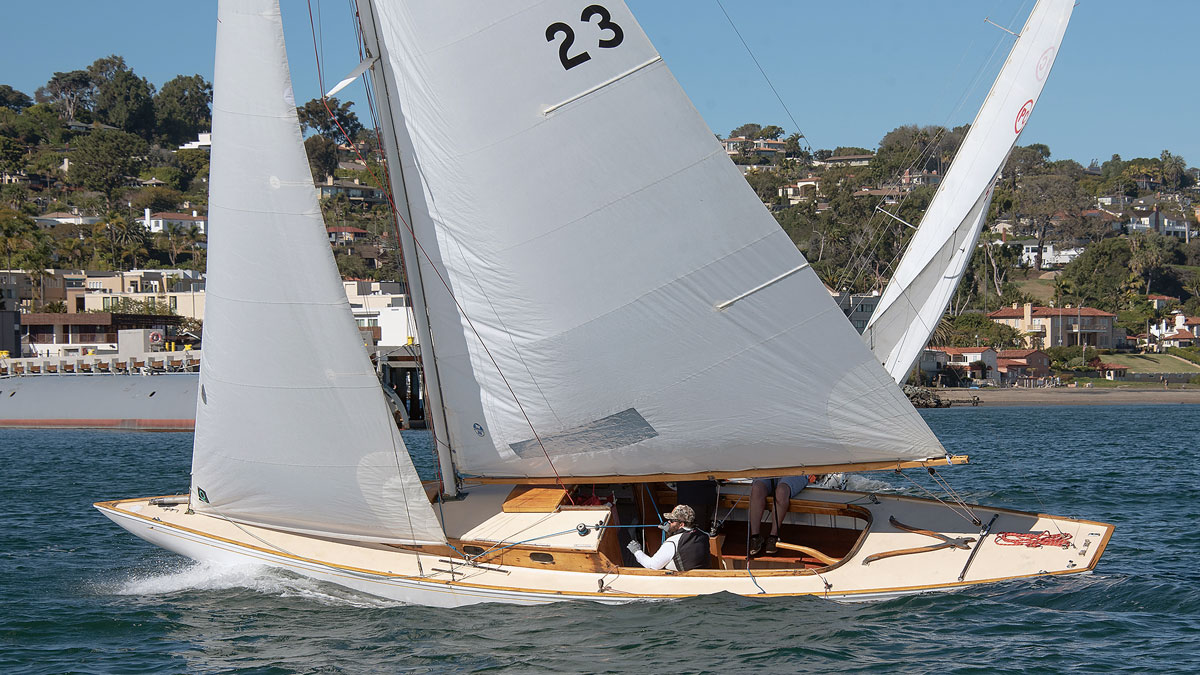
Danielle Richards and Seth Johnson crew with ROUTE 66’s owner, Brent Boyd. Boyd borrowed a mainsail from them to test a different cut while Richards and Johnson are currently having their PC, CHAOS (No. 23), restored.
Richards says that when she was a junior sailor at the SDYC she would walk past the PCs on E Dock almost every day on her way to sail dinghies with the sailing school. It wasn’t long before Bud Caldwell noticed her. He was a longtime employee at Kettenburg, and by the 1980s had been on hand for the development and building of more than a half-dozen Kettenburg designs. But he had a soft spot for PCs, especially his own boat, ONION TRUCK.
“Bud would see me coming down the dock,” says Richards, “and he would ask me what I was doing on Saturday. If I didn’t have a quick response, he drafted me to crew on ONION TRUCK for a race.”
So it was with a core group of junior sailors at SDYC. And while the PC fleets in places such as Newport Beach, Los Angeles, and Santa Barbara began to disappear as a generation of owners crossed the bar, the San Diego fleet more than held its own. Today, Richards is one of three PC owners in their early 30s who race with a crew of young cohorts.
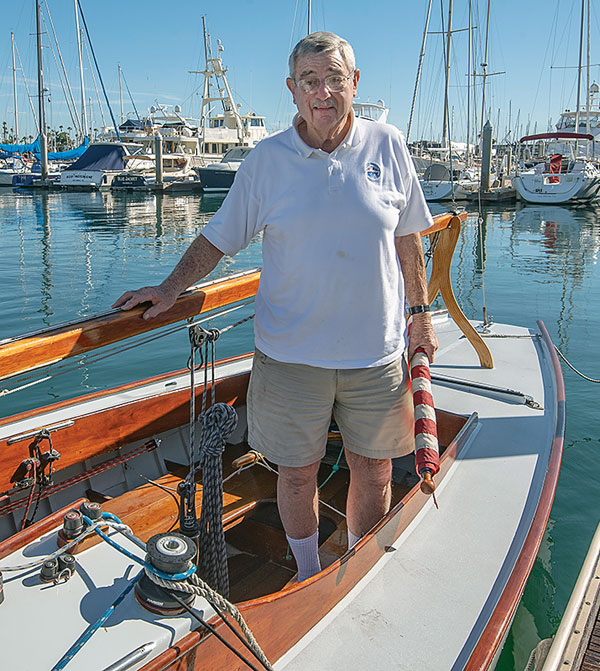
Longtime fleet member George Lindley, seen here aboard his 1935 PC LA CUCARACHA (No. 14), has been sailing PCs his whole life. LA CUCARACHA is the most successful PC in the class’s history, having taken numerous National and Fleet Championship titles.
Pavelec was also among the novices drawn into the fold by a casual invitation to sail in a PC. “My eyes popped out of my head,” he recalls about his first sail, “I fell in love.” The next thing he knew he had made an offer on a PC and raced home on his Harley to clean the house and cook dinner before he sprung it on his wife that he had just bought a 50-year-old boat that he “didn’t know how to sail.”
The rest is history. Since those days, Pavelec has owned seven PCs, gone as far as Alaska to rescue a boat from oblivion, sold some of the boats to bring new blood into the San Diego fleet, and restored several with the help of Koehler.
For Alex Caldwell, owning and maintaining what he still thinks of as his father’s PC is about his connection with his father and his mother. He’s a busy family physician in central California, but as often as he can, he drives four to five hours to San Diego to sail ONION TRUCK.
“My wife and I actually sleep aboard,” he says. “I see my dad everywhere in that boat.” And what memories it brings back. He remembers his final years of sailing ONION TRUCK with his father in a race called Men’s Mayhem, when they both qualified as senior citizens. But the PC also brings back memories of youth, like the time his dad asked Caldwell, then 15, and a couple of his friends to deliver a PC about 135 miles north to a regatta at Marina Del Rey.
“We didn’t have an engine, and we spent about a day becalmed off Oceanside, then again just outside Avalon Harbor [on Santa Catalina Island]. It took us four days before we sailed into Marina Del Rey.” ONION TRUCK taught the boys a lot about seamanship and seafaring adventure.
Sometimes Caldwell thinks that it’s crazy for him to keep his dad’s PC when he lives so far from San Diego. “But I’m hoping to get my grandkids interested in it,” he says. So he’s not letting go.
There’s no doubt that owners’ emotional connections to PCs have ensured their survival for far longer than Kettenburg could have imagined. The characters of the people who have sailed them for more than three generations have played a role in this, too—as have the beauty of the boats and the thrill of sailing them.
In recent years, there has been a new flurry of PC restorations. Koehler has been engaged in seven of these at his yard on Shelter Island in recent years. He tells a surprising story for a shipwright who once believed that classic yachts deserve restorations using traditional methods and materials.
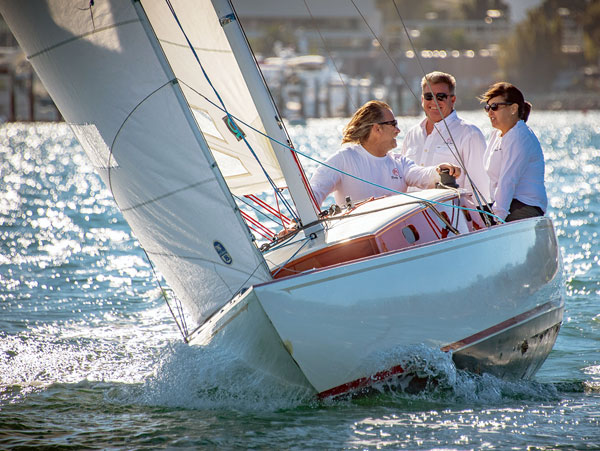
Steve and Heather Brownsea (seated astern and on the port rail) with guest crew take their ZEST on a reach to the finish line on the first of the three races of the 2019 Sun Series Trophy. Steve bought her in 2011 from the defunct Marina del Rey fleet and has been restoring the boat himself ever since.
“Bud Caldwell had a tired and leaky PC,” says Koehler. As a surfer, Caldwell knew the ins and outs of making repairs with resins. “So he decided to stop the leaks in his boat by recaulking the seams with polyester line soaked in epoxy, then coating the hull in epoxy.”
Purists scoffed. They thought it would never work, says Koehler. “But years went by. The boat won races, and it didn’t fall apart. It seemed to me maybe this guy had hit on something.”
But while Koehler and a number of PC owners were evolving variations of this epoxy method to add strength and stop the leaks in aging hulls, an amazing thing happened. The legendary Shelter Island boatbuilder Carl Eichenlaub decided he was ready to build his last boat, and that he wanted it to be a PC. He had been the U.S. Olympic Sailing Team shipwright from 1976 until 2004 and was a builder of world-champion Star-boats. So, after gaining the necessary permissions from the Kettenburg family, Eichenlaub set about crafting the first new PC to join the fleet in nearly 50 years. Traditionally constructed, hull No. 84 took to the water in 2004. Eichenlaub presented it as a gift to his daughter, Betty Sue Sherman, to celebrate her appointment as the first female commodore of the SDYC. She returned the gesture by naming her new PC the CARL EICHENLAUB.
At about the same time Eichenlaub was building his PC, a number of other owners were completing restorations. One was Koehler’s ground-up, stem-to-stern restoration of DAWN for Pavelec.
“About the only thing we saved was the ballast,” Pavelec says. “I hate to think how much money I’ve spent on these boats. But I’d do it all again. They have given me such joy.”

Randall Peffer is a regular contributor to WoodenBoat. His latest book is Never to Return: Surviving the Worst Combat Loss in the History of the U.S. Coast Guard.
ACCESS TO EXPERIENCE
Subscribe today.
Subscribe by February 10th and your subscription will start with the March/April 2024 (No. 297) of WoodenBoat .
1 YEAR SUBSCRIPTION (6 ISSUES)
Print $39.95, digital $28.00, print+digital $42.95.
To read articles from previous issues, you can purchase the issue at The WoodenBoat Store link below.
From Online Exclusives
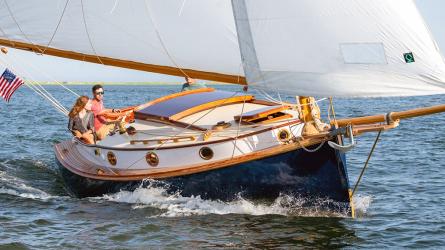
Aboard: LIBELLULE
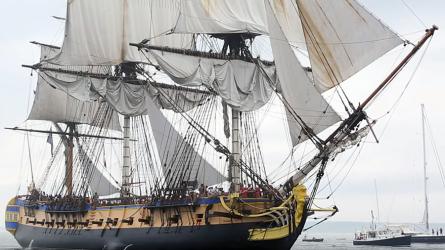
HERMIONE Visits Castine, Maine
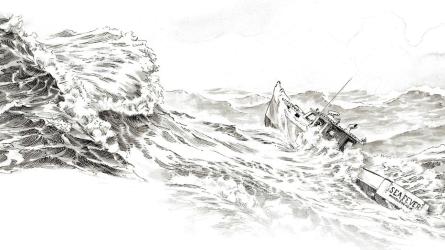
The Gift of SEA FEVER
Extended content.
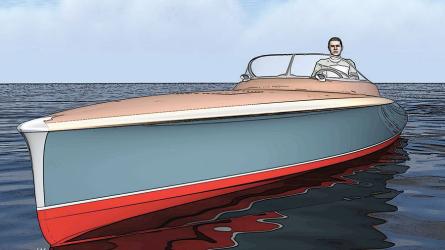
From the Community
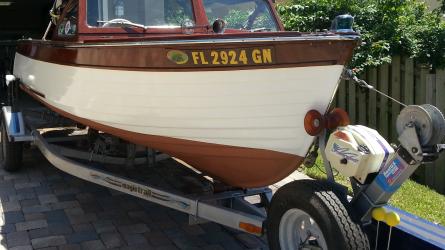
1959 THOMPSON 17’ RUNABOUT – PRICED TO SELL!
Pre 1905 Warren Cole Adirondack Guideboat LOA 16′, 42″ beam
Restored in ME by Jonathan Minott (seen in WB "Launchings" July/Aug 2009).
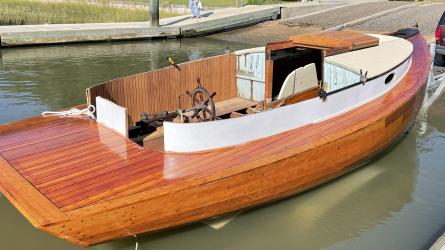
Vintage Crosby Catboat - I Belong in a Museum
Partial restoration. Has rare Edson oscillating (worm) steering system.
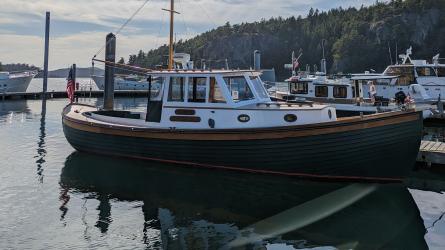
1996 Picnic Cruiser
1996 36 x 11 x 4 , picnic cruiser double ended. Cedar on oak bronze fastened.

Search form

O’Connor Racing: Wooden Hydroplane Built for Speed
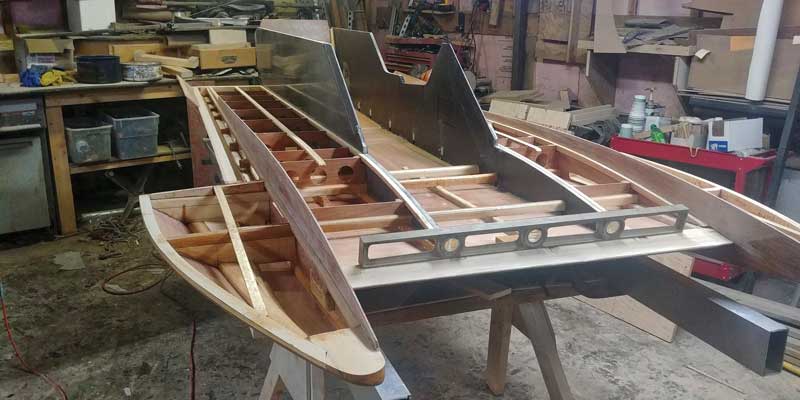
Passionate is a word that only begins to describe Bob O’Connor’s lifetime of devotion to building and understanding hydroplane boats. “You don’t do this for the money,” the energetic, Farmington-based boatbuilder said. “In fact, you’re lucky if you break even on these things.”
Now that O’Connor has taken over his well-known late father’s hydroplane building business, he has his sights set on nothing less than seeing one of his creations win the world title of hydroplane racing. “My father’s boats won third place twice,” the 56-year-old woodworking aficionado said while bustling around his small, basement shop. “But he wasn’t going to use modern materials in his boats. I do.”
Actually, in the subculture of international hydroplane enthusiasts, the current construction methods of O’Connor Racing Hydroplanes might still be considered a little old-fashioned despite the recent addition of materials like Kevlar and carbon fibers.
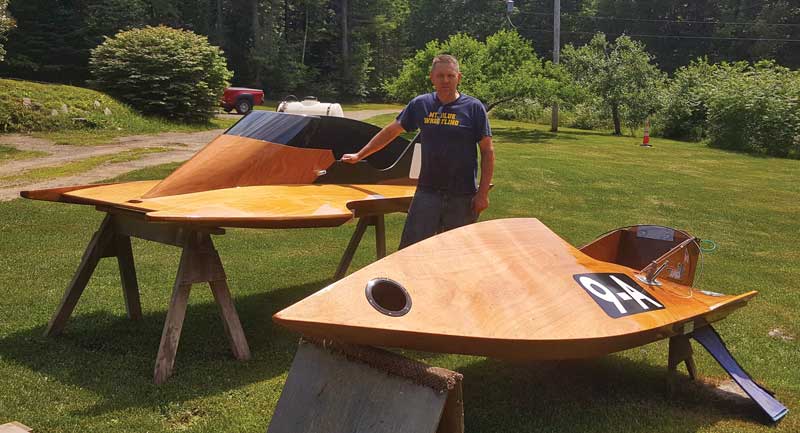
Hydroplane racing goes back a long time. The Gold Cup race was conducted on the Hudson River in 1904 with the winner’s boat topping out at an average, straight-line speed of 23 miles per hour. Contestants in those days drove lightweight boats made of wood, which is what O’Connor still prefers—mostly.
Wooden boats dominated racing for the next 30 years. The go-fast thinking then was simply to put more and more power in bigger and bigger planing boats. Winners like the 38-foot Miss America X , with four V-12 Packard engines jammed into her planked hull, hit speeds of more than 120 miles per hour in 1932.
In the late 1930s builders began to tinker with hull shapes.
An innovative boatyard in New Jersey radically redefined the planing boat’s hull design. Instead of a relatively flat hull with one small V-shaped keel down the middle, Ventnor Boat Works designed a hull with two V-shaped, underside projections at the edges, much like a catamaran. Called “sponsons,” these two outer edges provide additional lift to get more of the boat out of the water, as well as add stability when the boat goes into a turn. A lightweight Ventnor hydroplane won the 1939 Gold Cup, and racing has never been the same since.
“Basically, these boats are just airplanes brought down to the water,” O’Connor said of today’s three-point hydroplane design. He said there is more aerodynamics to the design than hydrodynamics. The key is getting most of the seven- to eight-foot boat out of the water so the two sponsons just barely skim the surface while the prop of the outboard engine stays in the water, pushing boat and driver along—hence the three-point nomenclature. “It’s definitely a balancing act out there,” he said. “You have to get everything just right.”
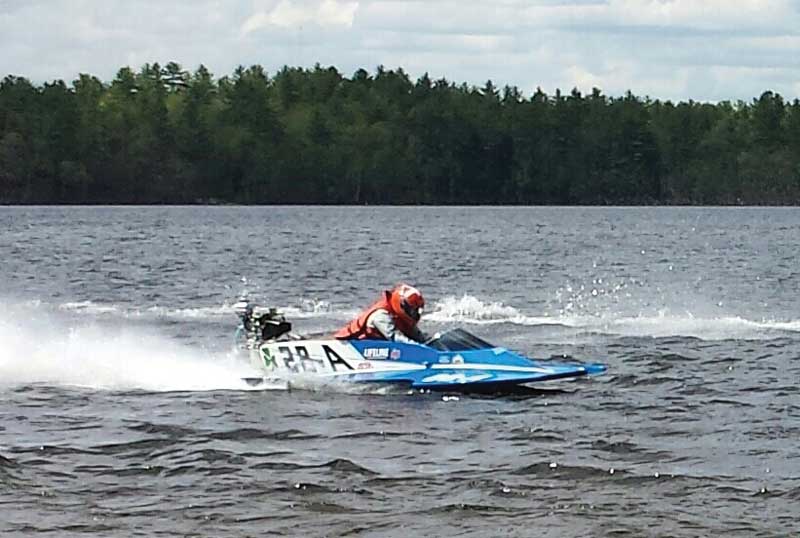
The balancing act in construction methods accelerated in the 1950s when new technologies made it possible to combine lightweight glass fibers with various hardening resins. But as a longtime furniture maker and home builder, Bob O’Connor Sr. wanted to stick with good old Maine white cedar for many parts of his hydroplanes, marrying them to thin plywoods and other woods, with weight reductions based mostly on design. That was the world into which Bob Jr. was born.
“I’ve been working with wood ever since I can remember,” O’Connor noted with pride. In addition to the boats, O’Connor has a full-time job as a foreman with the Farmington municipal waterworks department. During the school year, he also coaches wrestling at the local high school. All other free time (yes, he does find some), he devotes to working on, studying, thinking about, and designing hydroplane boats. He also has a very understanding wife.
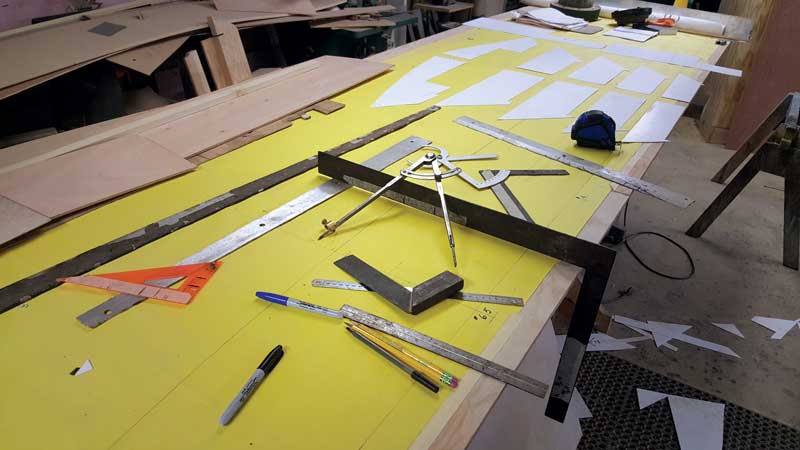
“Without question, Bob builds some of the safest and fastest hydroplanes in the world,” said Bill Allen, a Massachusetts hydroplane racer who heads up America’s most prestigious racing syndicate, U.S. A-Team. A ten-time national hydroplane champion, with four world speed records to his credit, Allen praised O’Connor’s “old-fashioned” construction methods. “In Bob’s boats, if something happens, the other boats are going to bounce off you, not go through you.”
O’Connor said driver safety is one of his prime concerns, having been a hydroplane racing driver himself most of his life. With his active racing days over, he now sticks to building and testing boats. “It does beat you up out there,” he said. “You’re crouched down, tensed up, barely able to move at all.”
Even slight driver movements in a hydroplane cockpit can send the vessel “kiting.” That’s when there’s too much lift forward and the hydroplane becomes airborne, usually going straight up in the air and flipping over amid the other contestants.
Remarkably, both O’Connor and his father before him are self-taught engineers and designers. While many competitors on the international racing circuits employ naval and aeronautical architects, along with certified engineers for creating and modifying their hydroplanes, Bob Jr. sticks with modifications suggested by customers like Allen, along with learning by deconstructing boats that are wrecked during the course of a race. “You can learn an awful lot about how to improve a design by finding out what went wrong,” he said.
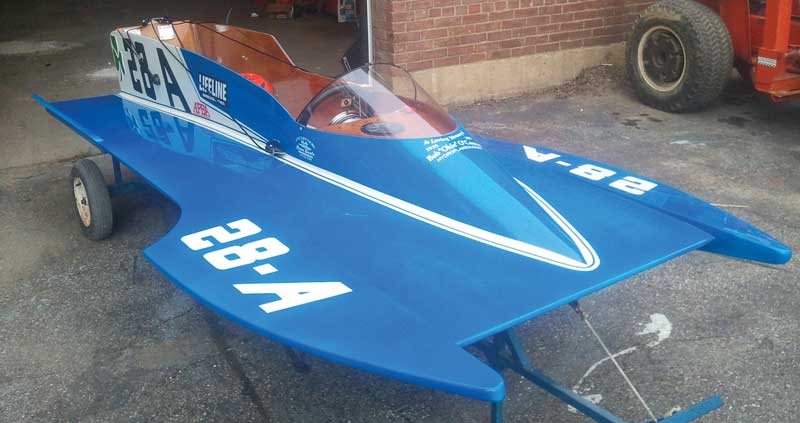
Composite wood-based hydroplanes that include Kevlar, carbon fibers, and the like are also easier to modify than boats made solely of modern plastics, he noted. A wood boat can be modified and reworked to make subtle changes to gain an edge.
“That’s what I like about Bob,” said racer Allen, who has owned and raced no fewer than 10 O’Connor boats. “He’s willing to work with you and make little changes to your specs, and usually comes up with good suggestions of his own.”
International Olympic Committee-sanctioned hydroplane races are held every year in Europe. Annually, the U.S. A-Team competes against heavily financed European and Asian teams in the OSY 400 class, which is considered the top competitive class among dozens of various hydro classes, both in the U.S. and abroad.
Said O’Connor, “I’m going to keep building them until we win first place. Second place is no place at all.”
Ken Textor has been living on, working on, writing about, and cruising boats along the Maine coast since 1977. He lives in Arrowsic.
O’Connor Hydroplanes
Builder: O’Connor Racing Hydroplanes 693 Holley Road, Farmington, ME 207-491-8144
Hydroplane No. 55-A: small, but very, very fast
By Polly Saltonstall
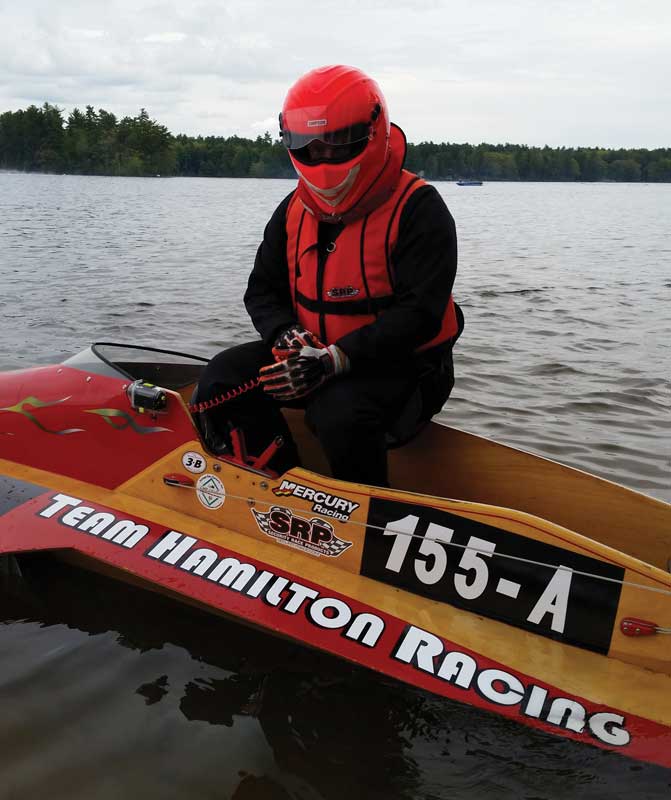
Launched last spring, the boat, which has no name—just a number like a stock car, 55-A— competed in its first race last May in Standish, Maine, on Watchic Lake.
Hamilton, who grew up in Rumford, learned about hydroplaning when his father took the family to races around the state in the 1960s and 1970s. When he was 12 Hamilton rebuilt a hydroplane for himself, and then built one from scratch with his brother when he was 14. Then came high school, college, and life. He left hydroplanes behind until 2014 when he was living in Wisconsin and could not get to Maine to sail his boat on Penobscot Bay. So he reacquainted himself with the speedy side of his character, bought a hydroplane, and took up racing in the Midwest region. He received the American Powerboat Association’s stock outboard rookie of the year award in 2014.
When he moved back to Maine, to Rockport in 2015, and became the plant manager for DuPont in Rockland (formerly FMC), his hydroplane came with him, but he knew he wanted a new one.
Hamilton’s younger brother also races hydroplanes and has two boats built by O’Connor. Hamilton put his name on the Farmington builder’s waiting list and two years later got his boat: a C Stock Hydro. Powered by a Yamato 33-hp racing engine, the boat weighs just 100 pounds.
In addition to the speed, Hamilton likes the sport because of the people he meets at races.
“The racing community is like one giant family,” he said, explaining that as many as 80 to 90 boats show up for these events. Hamilton planned to compete in six races over the summer, three of them in Maine.
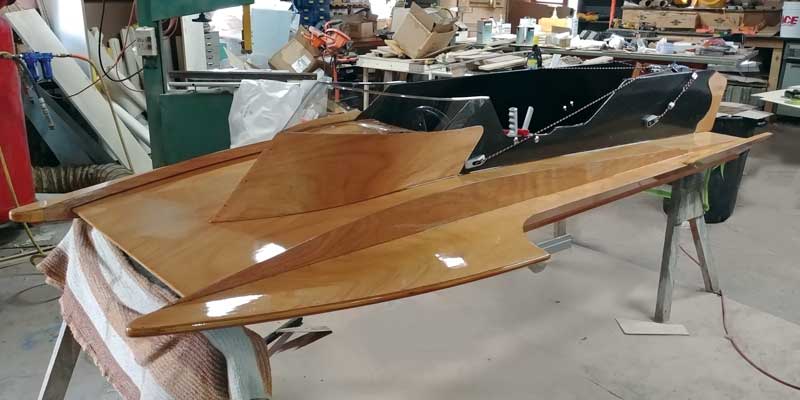
Hydroplanes are not much more than wedge-shaped flying saucers with cockpits. Hamilton’s boat will go as fast as 65 mph, and races might last just three minutes. The driver kneels in the cockpit behind a narrow windshield. “With your head and your arms forward you hang on for dear life to the steering wheel and the throttle,” he explained.
“Injuries are rare despite the speed. There is a high level of safety focus. The clothing and gear I wear costs more than my boat does.”
And Hamilton’s sailboat on Penobscot Bay? He still has a J46 named Meme Chum . It’s considered a fast sailboat by many, but for Hamilton, it’s where he goes when he’s ready to slow down.
Related Articles

Share this article:

Digital Edition Available ×
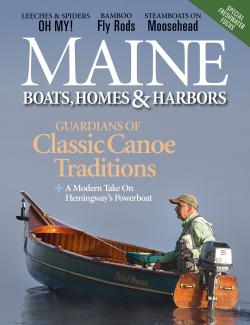
Can't get to the store to buy your magazine? We deliver the stories of Maine's coast right to your inbox. Sign up here for a digital edition .
2023 Maine Boat & Home Show ×

Join Us for the Maine Boat & Home Show !
Art, Artisans, Food, Fun & Boats, Boats, Boats
August 11 - 13, 2023 | On the waterfront, Rockland, Maine
Click here to pre-order your tickets.
Show is produced by Maine Boats, Homes & Harbors magazine.
- Client Galleries
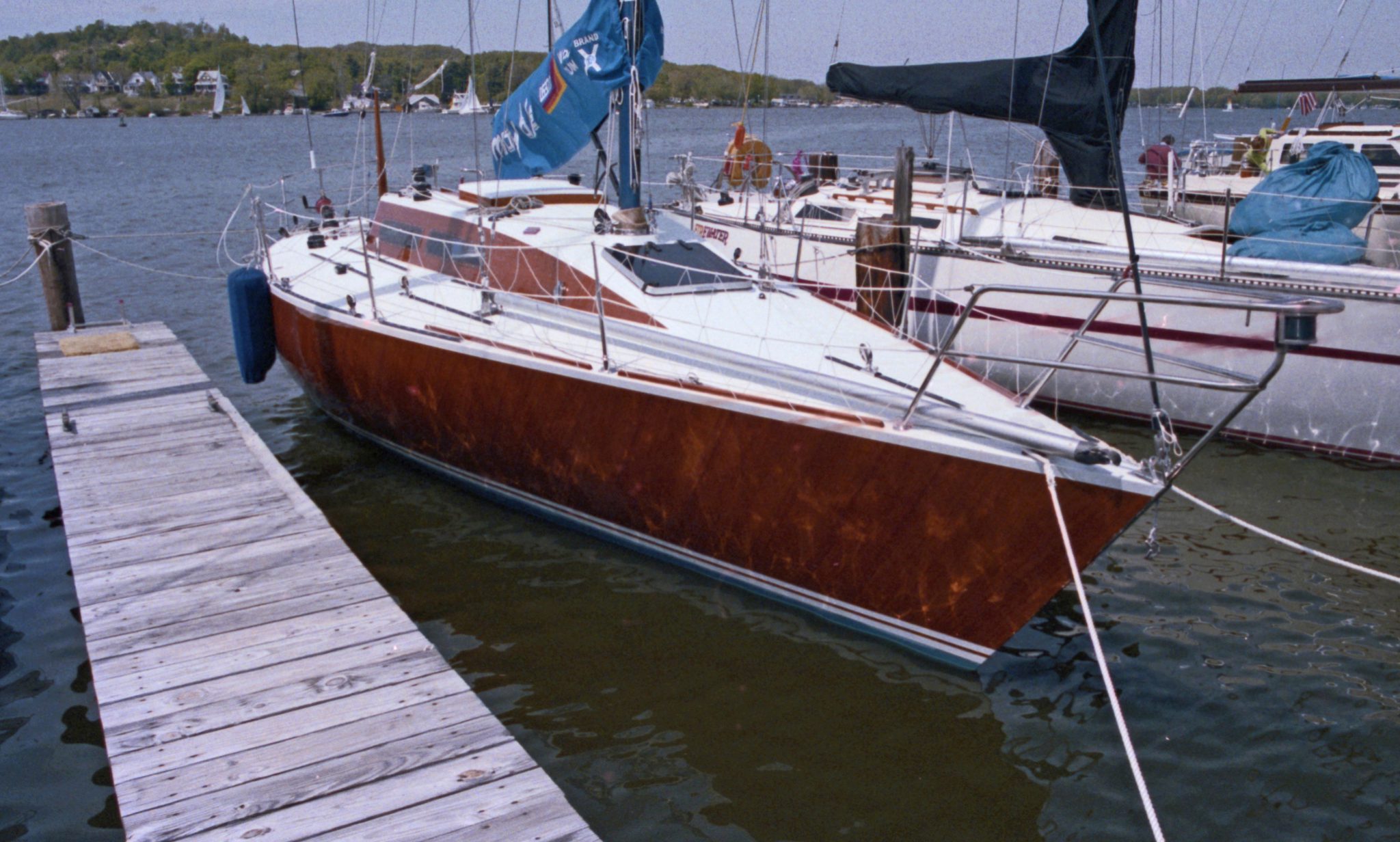
A Racing Sailboat
Built for racing and launched in 1984.
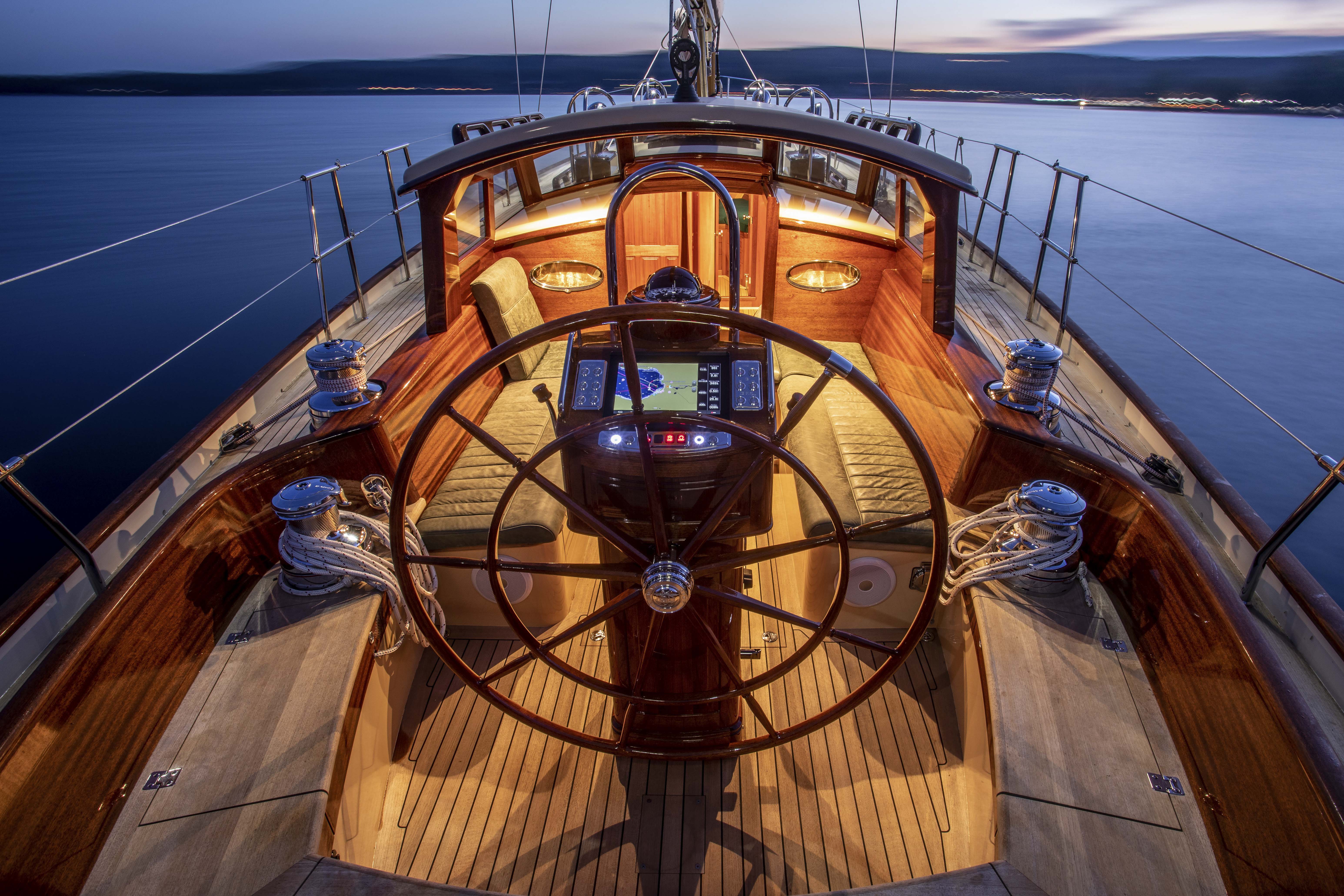
Star’s Echo
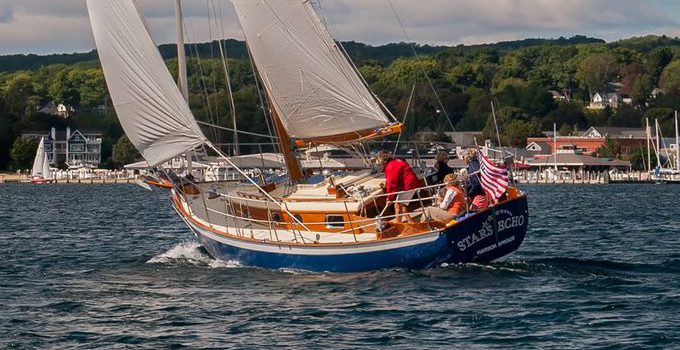
Saint Barbara
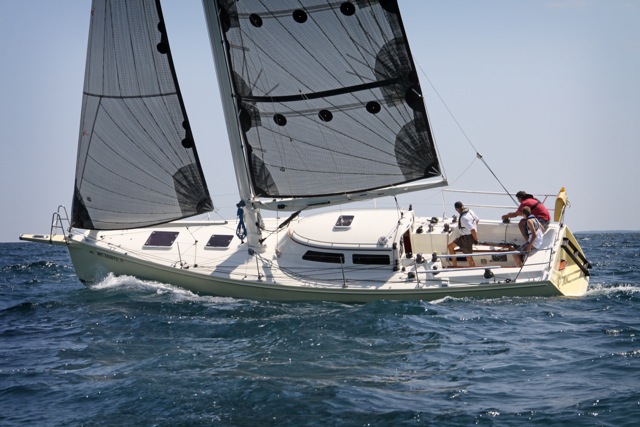
Pulling Boats

The Classic Beauty of Wooden Sailboats: Types, Characteristics, and How to Maintain Them

Welcome to our blog about wooden sailboats. These boats have a long and rich history, dating back to ancient civilizations such as the Egyptians and Phoenicians. Despite the advancement of technology and materials, wooden sailboats are still popular today for their classic beauty and traditional feel.
In this blog, we will explore the different types of wooden sailboats, their unique characteristics, and the proper techniques for maintaining them. From sloops to schooners, we’ll cover all the essential information needed to understand and appreciate these beautiful vessels. Whether you’re a seasoned sailor or a first-time boat owner, this guide will help you understand the allure and challenges of wooden sailboats. Let’s dive in!
Table of Contents
Types of Sailboats
There are several types of wooden sailboats, including sloops, ketches, yawls, and schooners. Sloops have one mast and are the most common type of sailboat. Ketches also have one mast, but with a smaller mizzen sail at the stern. Yawls have two masts, with the smaller mizzen sail located aft of the rudder post. Schooners have two or more masts, with the aft mast being shorter than the front mast.
Comparative table of types of wooden sailboats
How to maintain a wooden sailboat.
To maintain a wooden sailboat, it is important to keep the wood properly sealed and painted to protect it from water damage. This should be done every few years, depending on the severity of the weather and usage of the boat. Regularly inspecting and tightening hardware, such as deck fittings and cleats, is also important to ensure the boat stays in good condition.
It is also crucial to keep the interior of the boat dry and well-ventilated to prevent rot and mildew. This can be achieved by installing vents and keeping hatches and ports open when the boat is not in use.
Another important aspect of maintaining a wooden sailboat is to keep the sails in good condition. This includes inspecting them regularly for tears or wear and replacing them if necessary.
Lastly, it is important to keep the hull of the boat clean and free of barnacles and other marine growth. This can be done by using a hull cleaner and regularly scraping and sanding the bottom of the boat.
Pros and Cons of Wooden Sail Boats
Pros of wooden sailboats:.
- Classic Beauty: Wooden sailboats have a timeless beauty and traditional feel that can’t be matched by modern materials.
- Handmade Craftsmanship: Many wooden sailboats are still built by hand, which adds to their unique character and charm.
- Durability: Wooden sailboats are known for their durability, and with proper maintenance, they can last for many years.
- Repairability: Wooden boats can be repaired relatively easily, and small repairs such as leaks can be fixed by owners with the right knowledge and tools.
- Resale Value: Wooden sailboats often hold their value well and can be resold for a good price.
Cons of Wooden Sailboats:
- Maintenance: Wooden sailboats require regular maintenance such as painting and sealing to protect the wood from water damage.
- Cost: Wooden sailboats can be more expensive to buy and maintain than modern materials.
- Weight: Wooden sailboats tend to be heavier than boats made of other materials, which can affect performance.
- Rot: Wooden sailboats are susceptible to rot if they are not properly maintained and kept dry.
- Environmental Impact: Some types of wood used in boat-building may have negative environmental impact.
It’s worth noting that wooden sailboats are not the only option, and there are other materials such as composite, steel and aluminum that are used to build sailboats. Each material has its own advantages and disadvantages, and ultimately the choice will depend on the intended use of the boat, budget, and personal preferences.
Are wooden sailboats still made?
Yes, wooden sailboats are still made today. Although they are not as common as they once were, there are still many boat builders who specialize in constructing wooden sailboats. These boats are often built using traditional methods and are considered to be works of art. They can be custom-made to the buyer’s specifications, and many people appreciate the unique character and charm of a wooden sailboat. They are still popular among sailors who appreciate the traditional look and feel of wooden boats, and also among people who want to own a sailboat that is built by hand.
Are Wooden Sailboats Safe?
Wooden sailboats can be safe if they are well-built and properly maintained. However, it’s important to note that wooden boats are more susceptible to rot and decay if they are not kept dry and properly sealed. Additionally, wooden sailboats may be heavier than boats made of other materials, which can affect their stability and handling in rough seas.
It is also important to ensure that all the hardware, rigging, and sails are in good condition, as these are crucial for the safety of the boat and its crew.
Regular maintenance, inspections, and safety check-ups are important for wooden sailboats, just like any other sailboats, to ensure that they are in good condition and safe to sail. It’s also important to have basic knowledge of the boat and the sea, and to be aware of the weather conditions before going out to sail.
It’s worth noting that wooden sailboats may not be suitable for everyone, and different types of boats may be better suited to different types of sailing. It’s important to consider the intended use of the boat and the sailor’ experience level before making a decision on what type of boat to purchase.
How much does a wooden sail boat cost?
The cost of a wooden sailboat can vary widely depending on several factors such as size, design, and level of customization. A small wooden sailboat, such as a daysailer, can cost anywhere from $10,000 to $30,000. A larger wooden sailboat, such as a cruising sailboat, can cost upwards of $100,000 or more.
It’s worth noting that the cost of a wooden sailboat can also be influenced by the level of craftsmanship and the materials used. A wooden sailboat built by a well-known and experienced boatbuilder using high-quality materials will likely be more expensive than one built by an amateur using lower quality materials. Additionally, the cost of maintaining a wooden sailboat can be higher than that of a boat made of modern materials, so it’s important to factor in maintenance costs when budgeting for a wooden sailboat.
What is the fastest wooden sailboat?
The fastest wooden sailboat is a matter of debate, as there are many contenders that have set records over the years. However, one of the most notable and well-known is the “Fleury” a hydroplane sailboat built in 1910. It held the world speed sailing record for over 20 years, reaching a top speed of 28.86 knots (53.46 km/h).
Another notable contender is the “Gartmore” a hydroplane sailing boat built in 1911, that held the world speed sailing record at 29.81 knots (55.26 km/h)
In more recent years, the “Dudley Dix designed” yacht “Ran” has held multiple speed records, reaching speeds of over 30 knots.
It’s worth noting that these boats are not only wooden sailboats, but also hydroplane sailboats, which are a specific kind of sailboats designed to plane on the water’s surface at high speeds, rather than float on it like traditional sailboats, and are not suitable for cruising or long-distance sailing.
It’s also important to mention that these boats were built and sailed in different eras, and with different technology, materials and rules, so it’s difficult to make a fair comparison.
In conclusion, wooden sailboats are a unique and beautiful option for those who appreciate traditional craftsmanship and classic design. From sloops to schooners, these boats come in a variety of types, each with their own unique characteristics. However, it’s important to remember that wooden sailboats require regular maintenance to keep them in top condition. From sealing and painting the wood to inspecting and tightening hardware, it’s essential to keep these boats properly cared for.
It’s also important to remember that wooden sailboats may not be suitable for everyone. They are susceptible to rot and decay if not kept dry and properly sealed, and also wooden sailboats tend to be heavier than boats made of other materials, which can affect their stability and handling in rough seas.
Overall, owning a wooden sailboat can be a rewarding experience, but it’s important to understand the responsibilities that come with it. By following proper maintenance procedures and understanding the unique characteristics of these boats, wooden sailboat owners can enjoy the classic beauty and traditional feel of these vessels for years to come.
Sailing Better
Sailbetter.com is a website blog dedicated to providing sailors of all levels with the knowledge and skills needed to improve their sailing experience. Whether you're a seasoned sailor or a beginner, the blog offers valuable tips and techniques to help you navigate the open waters with ease and confidence. Whether you're interested in racing or cruising, you'll find useful information and expert advice to help you reach your sailing goals.
Recent Posts
Lagoon vs Leopard Catamaran: Which Sailboat Is Right for You?
Introduction When it comes to cruising on the open waters, catamarans have gained immense popularity for their stability, space, and comfort. Two of the leading catamaran manufacturers, Lagoon and...
How to Determine Sailboat Weight: A Comprehensive Guide
Introduction Sailing is a thrilling and adventurous activity that has captivated humans for centuries. Whether you are a seasoned sailor or a novice looking to set sail for the first time,...
1-360-966-7245
FOR THE MOST CURRENT ORDERING OPTIONS, PLEASE GO TO WWW.SAILINGIS.COM
Crafted in the USA using the finest materials from around the world.
Fast and Fun!
Controls from Shore on a Line. How Fun Are Free-Sailing Boats? Lots and Lots of Fun!
Owners' Pictures - the best part of our web site!
Our latest blog post - see what's happening at Tippecanoe!
Rc sailboat radio controlled, excellent sailing performance, order form please visit www.sailingis.com to order..
Regattas and News
T37 Canadian National Championships 2015
T37 canadian national championships 2014, click here to see our site map with all our toy boats and rc model sailboat pages.
- Yachting World
- Digital Edition

LA 28: The modern trailable boat that’s cold-molded from mahogany
- October 8, 2019
The LA 28 is a beautiful, cold-moulded wooden trailer-sailer that was designed to be unique, and has now sold nine boats across Europe. Sam Fortescue steps on board
Appropriately, it’s a long train ride through thick, thick forest before I reach the LA Yachts yard on the banks of Lake Müritz in central Germany. This seems apposite because the boat I’ve come to see is an exquisite example of how wood is just as relevant as ever when it comes to boatbuilding.
In truth, the LA 28 has little in common with the endless rows of fir that fringe the lake; she is cold-moulded from nobler stuff. But it is striking that this young shipyard chose to build in wood. I ask yard owner Lothar Fichtner why.
“It’s lighter than GRP and cheaper than carbon,” he says without blinking. So much for the romance of traditional construction, then. In fact, there’s little about this vessel the boatbuilders of 100 years ago would recognise.
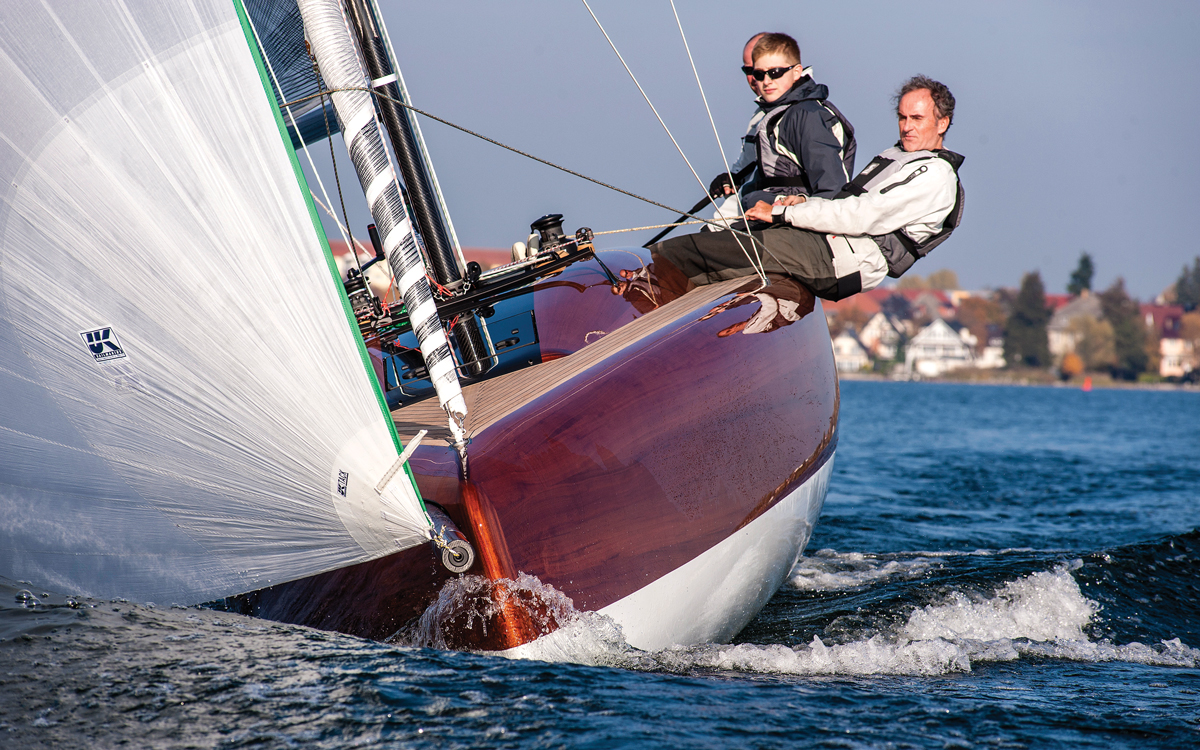
Around 60kg of Sicomin epoxy is used in the lay-up. Photo: Soenke Hucho
For one, cold moulding is a technique that relies heavily on epoxy resin to stick each layer of wood to the last and sheath the whole structure to keep the water out. Then there can be as much or as little carbon in the rig and the finish as you want, while propulsion comes courtesy of a Torqeedo electric motor.
Despite her elegant tumblehome and the plunging curve of her coachroof, this is a thoroughly modern boat. “The best of modern and traditional,” Fichtner says.
The story of the LA 28 begins with the desire of a wealthy man to have a beautiful sailing toy. Lothar Fichtner was that man and, having sold his engineering business, he wanted to enjoy more of life from his second home on Mallorca.
Article continues below…
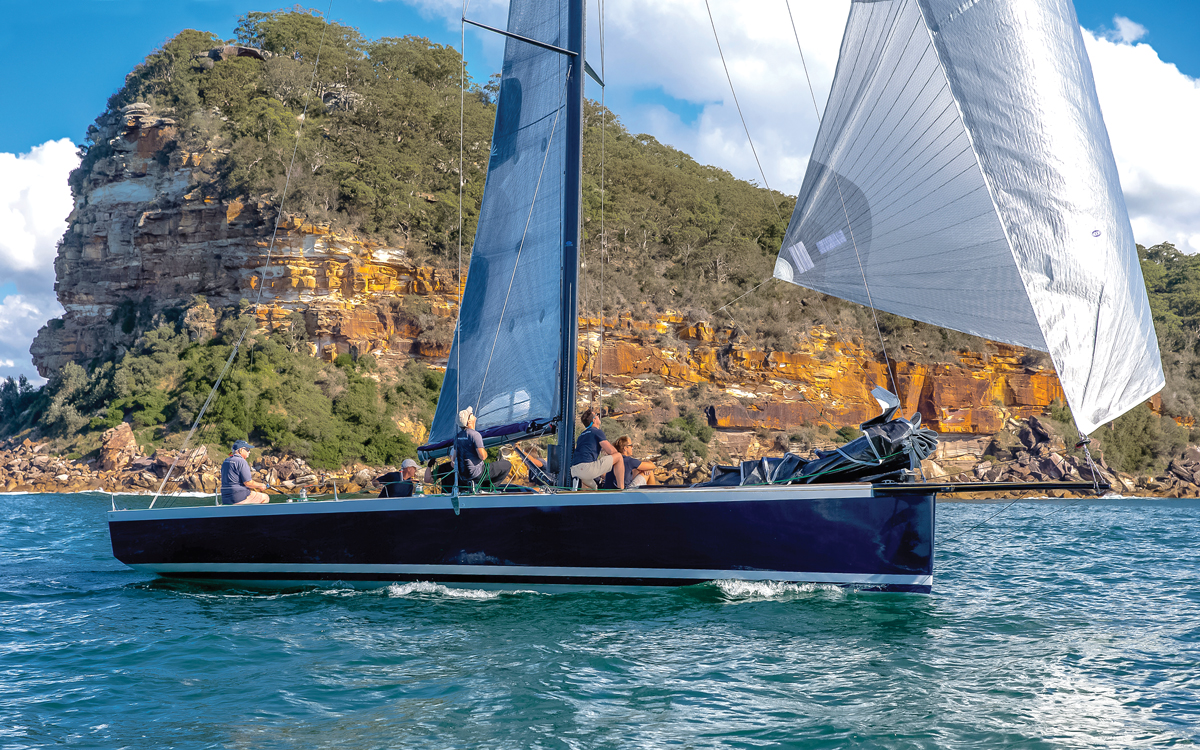
Revolver: Bruce Ritchie’s gentleman’s racer blends traditional and modern craftsmanship
“I wasn’t expecting this,” said Michael Ritchie when his 83-year-old father Bruce showed him the lines he had drawn up…

European Yacht of the Year 2019: Special yachts
This category assembles a varying mix of interesting craft, many of which we might otherwise not have had the chance…
He approached a boatbuilder in the Muritz region called Andreas Zehle who specialised in the building of the German 20er Jollenkreuzer racing dinghy class, also cold moulded. Then he drafted in designer Martin Menzner from Berckemeyer Yacht Design in Laboe on the Kieler Fjord.
This small design house has worked on everything from dinghies to high-latitude yachts, using a range of construction materials and techniques. Crucially, Berckemeyer is strong in cold-moulded yacht design, or ‘speed strip’ as they call it.
The brief was for a trailerable 8-9m boat, that was “simple to rig, as single-handed as possible and with excellent sailing characteristics,” Fichtner explains. “I am bothered by the current development in boatbuilding. Almost all boats look the same. I wanted something exclusive that is modern in design and traditionally built.”
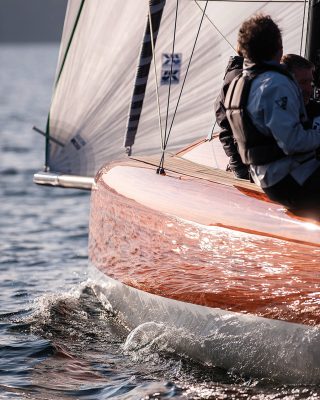
It takes more than 15 coats of varnish to achieve this degree of shine on the finish. Photo: Soenke Hucho
Menzner is a successful J/80 sailor himself, and the two men quickly saw eye-to-eye. The whole design process took just three months. Fichtner had no clear idea of it at the time, but he wasn’t just buying a boat, he was establishing a yard.
“I founded the shipyard because two boatbuilders were unemployed and I wanted to have a boat for my area in Germany and Mallorca,” he recalls. But one thing led to another, and Fichtner is a naturally ambitious man.
“We had a lot of success at trade fairs and continuous orders. Then I found my way into Germany’s Yacht magazine.” They have now sold nine boats since 2015, when the first garnered rave reviews at Interboat in Friedrichshafen.
Working with wood
Cold moulding requires a rough plug to be made, but no female tooling is needed, making it much cheaper to set-up than in the case of GRP or carbon. The plug around which the hull is formed is simply made from strips of softwood fastened around CNC-milled frames. It’s quick, cheap and relatively easy. The natural flexibility of the 2.5mm strips of wood used in cold moulding the hull iron out any imperfections in the mould.
The first stage of the process is to place a layer of plastic sheeting over the mould. Then the strips are bent into shape and clamped in place to hold their form. Each layer is bagged and vacuum infused with Sicomin epoxy resin, which soaks into the very top layer of the wood and helps to bond each strip edge-to-edge.
Each layer is laid in a different direction to the previous: longitudinal strips of okoume first, then lateral, then diagonal. For the outer layers, Lothar prefers African mahogany (khaya), giving a warm, reddish finish to the hull, which is many times stronger than the equivalent in glassfibre, and lighter too.
The deep curve of the tumblehome is all part of the hull shape, so it isn’t possible to mould the whole hull at the same time. Instead, there are two symmetrical plugs, one for the port side, one for starboard.
When the two halves are finished, they are simply epoxied together in the middle with a sort of low keelson covering the whole length of the joint for extra strength.
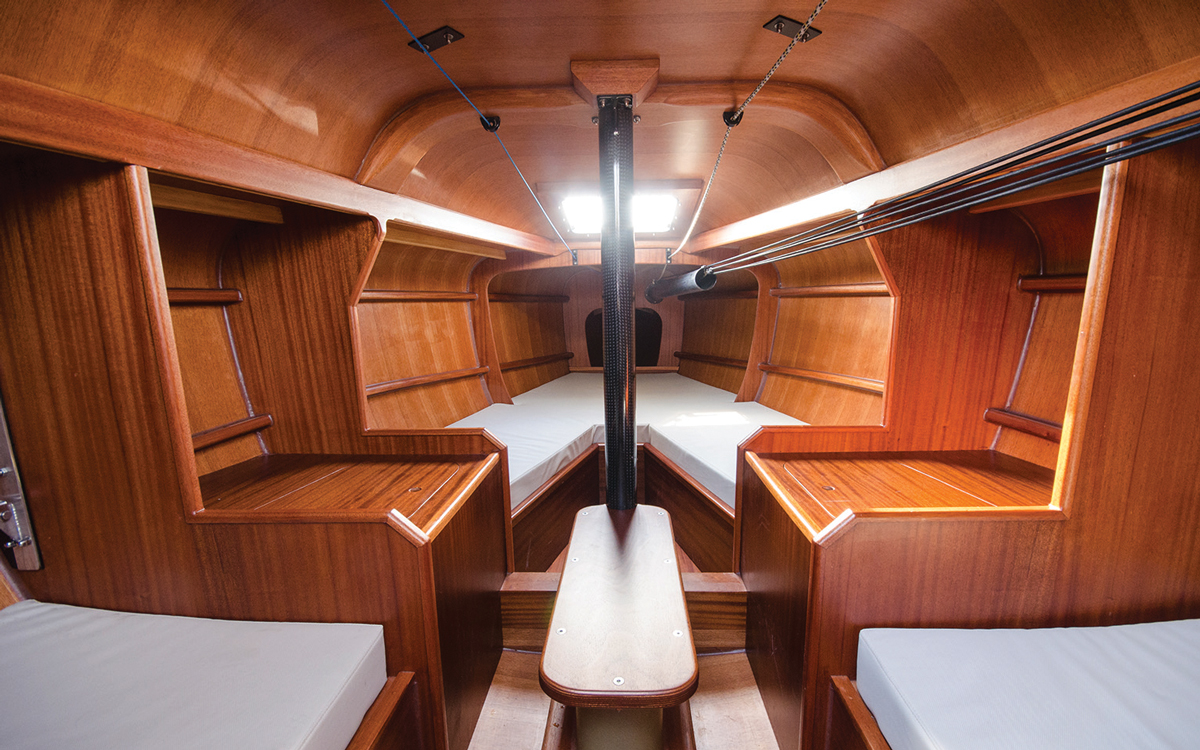
Cold moulding leads to a beautiful interior finish. Photo: Soenke Hucho
At this stage, the hull is still just a hollow form, albeit a beautiful one. Extra strength must be added next, which is achieved by ‘backfilling’ frames, ringframes and stringers – all glued into place after the event. These support the stresses of the mast, the shrouds and the keel, and provide structure for the transom, keelbox and so on.
The finish is a matter of personal taste – every owner makes their own decisions on this. Some have opted for carbon detailing; a layer of carbon epoxied around the aluminium mast post, for instance, a carbon keelbox and carbon fibre pads where the line for the retractable bowsprit passes through the companionway bulkhead into the cockpit. The mast and boom are both in carbon, with sails recommended in X-Drive carbon from UK Sailmakers.
Others have requested a white painted interior (a lot more work, observes Fichtner), or different woods used in the construction process to give a slightly different finish. The point is that every boat is unique and can be formed and specified to fit its new owner’s wishes: engine or no engine; spade rudder or transom-mounted kick-up rudder.
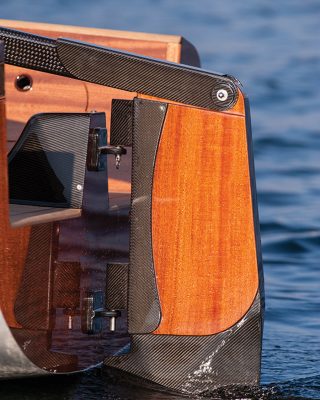
LA Yachts uses a very light wooden core for the tiller, then laminates it with carbon fibre. Photo: Soenke Hucho
Below the waterline the usual keel is a 600kg lead bulb, but again you can choose from a number of options. With the fixed keel there is the option of a 1.7m, 1.8m or 1.9m draught – depending on where you sail and how aggressively rigged she is.
But the hydraulic lift is proving a popular option, which reduces draught by 0.9m in the raised position. It’s a handy option for shallow waters, and makes it more feasible to land wherever the fancy takes you – perhaps with a family and a picnic basket.
True to the boat’s thoroughly modern character, Fichtner worked closely with Torqeedo in designing the LA 28 to use one of the company’s 2.5kW electric drives.
This is permanently mounted on a pod under the cockpit, but the throttle lives out of sight on a fold-down panel that pops out of one of the cave lockers. It’s a neat solution to the fact that the Torqeedo control is chunky and modern, and rather at odds with the otherworldly lines of the LA 28.
Controlled growth
The boat is resolutely designed to be simple to handle. “They sail easily and they’re very light. I can come into port by myself, and handle her myself,” Fichtner says. “With a bigger boat you always need a team – you are never alone.”
That said, there is a bigger boat on the horizon. Taking its cues from the look and handling of the LA 28, a larger 35-footer has been designed and will shortly enter the build phase. At 10.8m long, she can still be trailered, thanks to an all-up towing weight of just less than 3.5 tonnes.
“I want to invest in quality,” says Fichtner determinedly. “My dream would be to build just three boats per year.” There seems to be a preponderance of billionaires among the ownership ranks of LA Yachts, so perhaps three a year is more ambitious than it sounds.
Specification
LOA: 8.8m (28ft 11in) LWL: 8.0m (26ft 3in) Beam: 2.5m (8ft 2in) Draught: 1.7-1.9m (5ft 7in-6ft 3in) Keel raised: 0.8-1.0m (2ft 8in-3ft 3in) Displacement: 1.5 tonnes Ballast: 600kg (1,322lb) Engine: Torqeedo Cruise 2.0FP Price: €120,000 (ex. VAT)

The CCWBRA was founded in 2010 to encourage and organize racing in the Cocktail Class Runabout. Based on the out-board racer SKUA, an 8 ft. plywood skimmer designed in 1939 by Charles MacGregor, the Cocktail Class Runabout is an economical, easily constructed and exciting runabout. It is ideal for racing at all skill levels and ages.
Although a young powerboat racing organization, the CCWBRA and its one-design Cocktail Class Runabout have received overwhelming enthusiasm and support from around the world. Boats are being built and raced in 33 states and 7 countries. We are sure they will engage all generations of your family and friends for many years to come!

Boats are being built and raced in 33 states and 7 countries. Chesapeake Light Craft of Annapolis, MD sells manuals, full-sized plans, and partial and full kits of a stitch-and-glue Skua, which meet the requirements for CCWBRA sanctioned races. More information about their kits may be found at www.clcboats.com .
We are always looking for venues for spring, mid-summer and fall regattas. Local groups who wish to host CCWBRA races should contact the Fleet Captain ( [email protected] ) regarding the posting of race dates and locations. The Fleet Captain will also provide assistance with coordinating an holding an event.

Governor’s Cup Kicks off 2023 Season
Florida weather always warrants watching and waiting. Cancel or reschedule the Governor’s Cup? Not a chance! After uncertainty all week,…
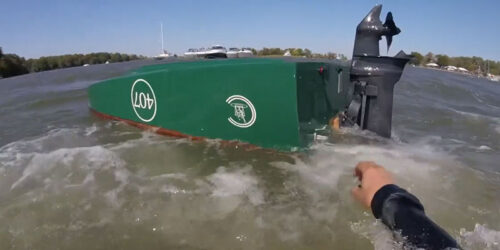
Oktoberfest 2022
A 10-15 knot SSW breeze raised a chop on Fairlee Creek, but that didn’t dampen the enthusiasm and excitement for…
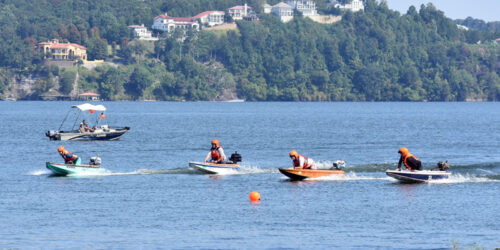
Tennessee Cup 2022
The second annual Tennessee Cup was an outstanding event. The weather was perfect and the State Park once again, welcomed…
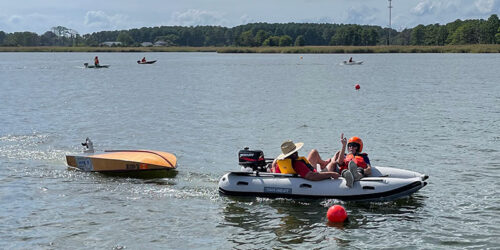
Kent Island Regatta 2022
Turtles, Jellyfish, Beautiful Weather and Great Racing Pity the poor Cocktail Racer who wasn’t at the Kent Island Regatta on…

CCWBRA Nationals 2022 Race Results
Tohatsu class grows as Kiwi scores hat trick in OMCs and Turtle Club gets a new Turtle The Weather Gods…
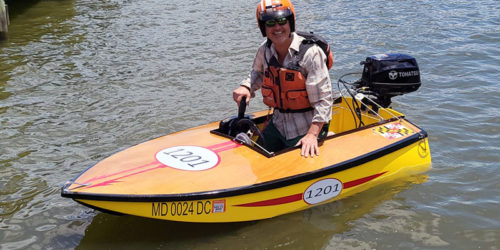
Helpful Hints on Installing a Remote Control Adapter on a Tohatsu 6HP 4-Stroke Outboard Motor
If you are in the process of purchasing a Tohatsu 6HP 4-Stroke outboard motor for your Cocktail Class Racer, or…
Follow CCWBRA on Facebook

Step-By-Step Guide: How to Build a Wooden Sailboat – Complete DIY Tutorial
Alex Morgan
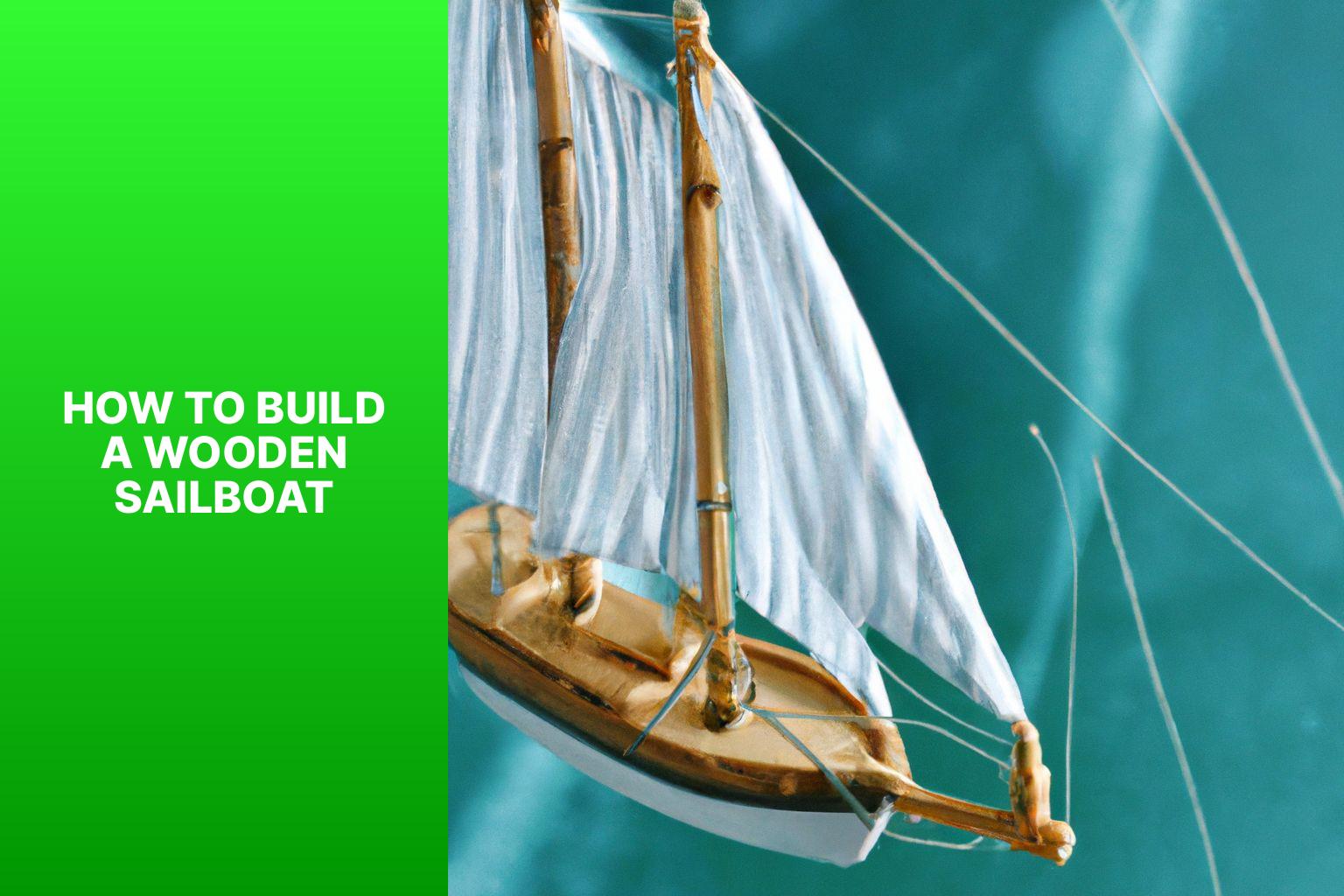
Building a wooden sailboat is a rewarding and fulfilling endeavor that allows you to create your own vessel for sailing adventures. Whether you’re a seasoned sailor or a woodworking enthusiast, constructing a wooden sailboat requires careful planning, attention to detail, and a love for craftsmanship. This comprehensive guide will take you through the step-by-step process of building a wooden sailboat, from choosing the right design and gathering the necessary materials to assembling the framework, building the deck and cabin, and installing the sails and rigging. We will also discuss the finishing touches and regular maintenance required to keep your wooden sailboat in optimal condition for years of enjoyment on the water. Let’s dive into the world of wooden sailboat construction and embark on this exciting journey together.
Key takeaways:
Key takeaway:
- Choosing the right design and plans is crucial: Research different sailboat designs and select suitable plans based on your skill level to ensure a successful project.
- Gather the necessary materials and tools: Pay attention to wood selection and preparation, as well as acquiring the tools and equipment needed for building your wooden sailboat.
- Attention to detail in the construction process is important: Prepare and assemble the framework carefully, focusing on lofting, laying out the keel, constructing the ribs, and the hull structure to ensure a sturdy and reliable sailboat.
Choosing the Right Design and Plans
When it comes to building a wooden sailboat, one of the crucial steps is choosing the right design and plans. In this section, we’ll take a deep dive into the world of sailboat designs and explore the vast array of options available. From researching different sailboat designs to selecting plans that match your skill level, we’ll guide you through the exciting process of bringing your wooden sailboat dream to life. So, hop aboard and let’s set sail on this exhilarating journey of craftsmanship and adventure.
Researching Different Sailboat Designs
When conducting research on sailboat designs, it is important to take into account a variety of factors in order to select the most suitable design. One of the primary considerations is whether you prefer a monohull or a multihull sailboat. Monohulls are more commonly found and offer superior performance when sailing upwind, whereas multihulls provide both stability and speed.
Another aspect to consider is your level of sailing experience. If you are a beginner, it is advisable to seek out designs that are easier to handle and forgiving. On the other hand, experienced sailors may gravitate towards performance-oriented designs that are ideal for racing or long-distance cruising.
It is crucial to think about how you intend to use the sailboat. Are you looking for a day sailer , a cruiser , or a racing boat ? Each design comes with its own set of distinctive features and characteristics.
Determining the appropriate size of the sailboat is another crucial step, which should be based on the number of people and activities you plan to have on board. You must also decide whether you prefer an open cockpit or an enclosed cabin .
To find the perfect sailboat design that aligns with your sailing goals and preferences, it is imperative to thoroughly research various options and take into consideration all of these factors. By doing so, you will be able to make an informed decision and select the ideal sailboat design.
Selecting Suitable Plans for Your Skill Level
When it comes to building a wooden sailboat, it is crucial to select suitable plans that match your skill level. This is important as it ensures that you have the necessary knowledge and expertise to effectively complete the construction. In order to help you with this, here is a table that outlines the different skill levels and the corresponding plans:
Choosing the right plans for your skill level is essential as it enables you to navigate the construction process smoothly, avoid any complications, and ultimately achieve the desired result. It is crucial to honestly evaluate your woodworking skills and then select plans that align with your abilities. Keep in mind that building a wooden sailboat demands patience , attention to detail , and a willingness to learn and improve your woodworking skills.
As a pro tip, if you are a beginner, it is advisable to start with simpler plans and gradually work your way up to more complex projects. This allows you to gain experience and confidence in your woodworking abilities over time. So always remember to select suitable plans for your skill level and enjoy the process of building your wooden sailboat.
Gathering the Necessary Materials and Tools
When it comes to building a wooden sailboat, gathering the necessary materials and tools is key . In this section, we’ll dive into the exciting world of selecting and preparing the right wood for your sailboat, as well as the essential tools and equipment you’ll need to bring your project to life. So, start sharpening your creativity and let’s sail away into the realm of wooden boat construction!
Wood Selection and Preparation
Incorporating the provided keywords naturally in the provided text:
1. Conduct research on the different types of wood used in boatbuilding, such as mahogany , teak , or oak . This will help you make an informed decision regarding the most suitable wood for your sailboat.
2. Determine the specific requirements of your sailboat design in order to guide your wood selection process. Each design may have different needs and preferences when it comes to the type of wood to be used.
3. Take into consideration the durability and resistance to rot of the wood options available. This is crucial to ensure the longevity and overall quality of your sailboat. Choosing a wood that can withstand exposure to water and other elements is essential.
4. Look for straight , dry , and defect-free wood. This will contribute to the structural integrity of your sailboat. Any defects or irregularities in the wood may compromise its strength and performance.
5. Calculate the amount of wood needed based on the specific design and measurements of your sailboat. This will help you estimate the quantity of wood required for the construction process.
6. Mill or cut the wood into the required dimensions and shapes as outlined in the sailboat design. This step is crucial for achieving the desired structure and appearance of your sailboat.
7. Prior to assembly, it is important to sand the wood surfaces thoroughly. This will remove any rough edges or splinters, ensuring a smooth and safe finish.
8. Apply a protective coating or sealant to the wood in order to prevent water damage. This will help preserve the wood and extend its lifespan .
By following these steps, you can ensure that the wood selected and prepared for your sailboat construction is suitable and of high quality.
Tools and Equipment Needed for the Project
When embarking on the construction of a wooden sailboat, it is crucial to have the appropriate tools and equipment to ensure successful completion.
To accurately measure and obtain precise alignment and dimensions, essential measuring tools such as a tape measure , combination square , and level are indispensable.
For shaping wooden components, cutting tools like a circular saw or table saw , jigsaw , and hand saw are necessary.
Joinery tools, including a chisel set , mallet or hammer , and drill with different-sized bits, are vital for smoothly joining parts together.
To achieve a polished finish, sanding and finishing tools such as sandpaper with varying grits, sanding blocks , and a random orbital sander are crucial.
Additionally, brushes and rollers are required for the application of finishes.
When it comes to safety, it is imperative to prioritize the use of safety goggles , ear protection , a dust mask , and work gloves to ensure personal protection during the construction process.
When selecting tools and equipment, it is essential to invest in high-quality items that are specifically designed for the tasks involved in wooden sailboat building.
By doing so, not only will efficiency be maximized, but the overall quality of the finished boat will also be greatly enhanced.
Preparing and Assembling the Framework
As we delve into the world of building a wooden sailboat, we now find ourselves in the exciting phase of preparing and assembling the framework. In this section, we’ll discover the essential steps that go into setting up the lofting and laying out the keel , as well as the intricacies of constructing the ribs and hull structure. Get ready to immerse yourself in the hands-on process of bringing this magnificent vessel to life!
Setting Up the Lofting and Laying Out the Keel
To properly set up the lofting and lay out the keel for a wooden sailboat, it is important to follow these steps in a systematic manner:
- Firstly, prepare the lofting area by clearing a large, flat space where the plans and measurements will be placed.
- Next, securely attach the keel stock to the lofting platform, making sure it is both level and aligned with the boat’s centerline.
- Using battens, rulers, and pencils, transfer the measurements and lines from the boat plans onto the lofting platform.
- Ensure the accuracy of the waterlines, buttock lines, and other reference lines on the lofting platform by drawing them according to the measurements provided in the boat plans.
- Utilizing the dimensions indicated in the plans, measure and mark the positions of the keel, stem, and transom on the lofting platform.
- Thoroughly examine and adjust all lines and measurements to guarantee their accuracy.
- Identify the locations where any additional frames, bulkheads, or structural elements will connect to the keel, by marking them accordingly.
- Prior to proceeding, double-check all marks and measurements to ensure their accuracy.
The process of setting up the lofting and laying out the keel is an integral step in the construction of a wooden sailboat. It serves as the foundation and reference points for the boat’s overall structure. It is crucial to pay close attention to detail and maintain accuracy throughout the build. By following these steps, you will be on your way to constructing your very own wooden sailboat.
Constructing the Ribs and Hull Structure
When constructing the ribs and hull structure of a wooden sailboat, follow these steps:
– Measure and cut the ribs: Use the plans as a guide to mark and cut the dimensions on the wood. Cut the ribs accurately.
– Attach the ribs to the keel: Position and attach the cut ribs evenly along the keel using marine epoxy and screws.
– Install chines and stringers: Attach the chines to the bottom edge of the boat and install the stringers along the sides for strength.
– Attach the planking: Cut and fit planks to cover the rib and stringer structure, securing them tightly.
– Reinforce the joints: Apply epoxy and fiberglass tape over the joints to strengthen the structure.
– Shape the hull: Use tools to shape and smooth the hull, paying attention to fairing for optimal hydrodynamics.
– Apply a protective finish: Coat the hull and ribs with marine-grade varnish or epoxy for durability.
– Perform a thorough inspection: Check for defects, cracks, or imperfections and make necessary repairs before moving forward.
The process of constructing wooden sailboats has evolved over time, combining traditional techniques with modern materials and tools. Craftsmanship, attention to detail, and an understanding of wood’s properties are still essential in constructing the ribs and hull structure. This blend of artistry and engineering ensures sailboats can withstand the demands of the sea while providing a smooth and enjoyable sailing experience.
Building the Deck and Cabin
Let’s dive into the exciting world of building a wooden sailboat! In this section, we’ll focus on the crucial element of constructing the deck and cabin. Get ready to explore the process of creating the deck framework and adding those essential interior features . From laying the foundation to crafting a cozy cabin space , we’ll uncover the key steps and considerations for bringing your wooden sailboat to life. So, grab your tools and let’s set sail on this exhilarating construction journey !
Creating the Deck Framework
When creating the deck framework for a wooden sailboat, follow these steps:
- Measure and mark the desired deck size and shape on the boat’s frame.
- Cut and shape the wooden planks or panels to match the marked measurements.
- Align the planks or panels horizontally across the frame, ensuring they are straight and evenly spaced.
- Secure the planks or panels to the frame using screws or nails, ensuring tight fastening.
- Add additional support beams or joists underneath the deck for added strength and stability.
- Sand the deck surface to create a smooth and even finish.
- Apply a weather-resistant sealant or paint to protect the deck from moisture and UV damage.
- Install necessary features or fixtures on the deck, such as hatches, cleats or railings.
Pro-tip: Enhance the deck’s strength and durability by adding epoxy or marine adhesive between the joints before securing the planks or panels.
Installing the Cabin and Interior Features
When building a wooden sailboat, it is important to pay attention to every step, including the installation of the cabin and interior features. To install these features, follow the following steps:
1. First, measure and cut the materials for the cabin walls, floor, and ceiling.
2. Next, securely fit the cabin walls in place.
3. Then, attach the floorboards to the cabin base using screws or nails.
4. Align and install the cabin ceiling.
5. If desired, add insulation for extra comfort.
6. Attach interior features such as cabinets, storage compartments, and seating areas.
7. Install windows and hatches to allow for natural light and ventilation.
8. Properly wire the cabin for electricity, ensuring that lights and outlets are installed and functioning.
9. Finish the interior by sanding and applying a protective coat of varnish or paint.
10. Ensure that all installations meet safety standards.
Precision and attention to detail are key when installing the cabin and interior features of a wooden sailboat. By carefully measuring, cutting, and fitting each component, you can ensure a secure fit. It is important to optimize the layout and functionality of the interior features to create a comfortable living space with ample storage. The addition of windows and hatches will enhance comfort and enjoyment by providing natural light and ventilation . If electricity is needed, proper wiring is essential to ensure necessary lighting and power outlets. Finishing the interior with a protective coat of varnish or paint will not only enhance aesthetics but also provide durability.
Remember, the goal is to create a cozy retreat for sailors, so it is important to put in the necessary effort to install the cabin and interior features correctly.
Installing the Sails and Rigging
Set sail with confidence as we dive into the exciting world of installing the sails and rigging for your wooden sailboat. Discover the key considerations in choosing the perfect sails and master the art of setting up and adjusting the rigging. With expert tips and tricks , this section will equip you with the knowledge to navigate the waters with ease and experience the thrill of sailing your wooden masterpiece .
Choosing the Right Sails
When choosing sails for your wooden sailboat, consider the following factors:
– Type of sailing: Determine if you plan to cruise , race , or do both. Different sails are designed for specific purposes.
– Boat size: The size of your sailboat determines the size and number of sails you need. Larger boats require bigger sails , while smaller boats may need fewer and smaller sails .
– Wind conditions: Consider the typical wind conditions in your sailing areas. Different sails perform better in light winds , heavy winds , or various wind conditions.
– Sail material: The material of the sails affects durability and performance. Material choices include Dacron , laminate , and nylon . Each material has different trade-offs between longevity, performance, and cost.
– Reefing options: If you sail in varied or unpredictable wind conditions, choose sails with reefing options. Reefing allows you to adjust the sail area for stronger winds, improving control and safety.
– Manufacturer reputation: Research sail manufacturers for their reputation and reliability. Read reviews, seek recommendations, and consider warranty and customer support.
By considering these factors, you can make an informed decision when choosing sails for your wooden sailboat. Remember, the right sails greatly impact your sailing experience, so take your time and choose wisely.
Setting Up and Adjusting the Rigging
When setting up and adjusting the rigging of a wooden sailboat, it is important to follow these steps to ensure proper and safe rigging.
To start, attach the mast to the deck using a mast step or mast partner for stability and support. This will provide the foundation for the rigging.
Next, secure the standing rigging , which includes the shrouds and stays , to the mast. This will help distribute the forces from the sails and ensure the stability of the mast.
Connect the forestay to the bow of the sailboat. This will keep the mast in line and control the position of the headsail.
To counteract forces from the headsail and maintain rigging tension, attach the backstay to the stern of the boat.
Use turnbuckles or rigging screws to adjust the tension in the standing rigging. This will ensure proper alignment and support of the mast.
Install the running rigging , including halyards and sheets , to control the position and tension of the sails.
Before and during sailing, it is important to regularly check the tension in the rigging to ensure performance and safety.
Make any necessary adjustments to the rigging during sailing in order to optimize the shape of the sails and enhance the performance of the boat.
By following these steps, you will be able to properly set up and adjust the rigging of your wooden sailboat, allowing for safe and enjoyable sailing experiences.

Finishing Touches and Maintenance
When it comes to completing your wooden sailboat and keeping it in top shape, this section has got you covered. We’ll dive into the art of applying exquisite finishes to the hull and deck, giving your sailboat a stunning appearance. And don’t worry, we won’t neglect the nitty-gritty details of regular maintenance and care, ensuring your wooden vessel remains seaworthy for years to come. So, let’s get ready to add those finishing touches and keep your sailboat sailing smoothly !
Applying Finishes to the Hull and Deck
When building a wooden sailboat, applying finishes to the hull and deck is crucial for durability and aesthetic appeal. Here are the steps to follow:
1. Prepare the surfaces: Sand down rough spots, fill in cracks and imperfections, and ensure a smooth and clean surface.
2. Choose the right finish: Consider the type of wood and desired look. Varnish provides a glossy and traditional appearance, while paint offers different colors and styles.
3. Apply the primer: Enhance adherence and create an even surface for the final coat by applying a primer.
4. Apply the finish: Use a brush or roller to apply the chosen finish coat to the hull and deck. Follow the manufacturer’s instructions for drying times and application techniques.
5. Allow for drying and curing: Follow the manufacturer’s instructions for drying and curing to ensure the finish is fully set and provides maximum protection.
6. Inspect and touch up: After drying, inspect the hull and deck for missed spots or imperfections. Touch up any areas that require additional finish for a seamless and polished look.
By following these steps and applying finishes properly, you can protect and enhance the hull and deck of your wooden sailboat, ensuring it looks beautiful and lasts for many years.
Regular Maintenance and Care for Your Wooden Sailboat
Regular maintenance and care for your wooden sailboat is crucial for its longevity and performance. Here are the steps to follow:
1. Inspect the hull and deck for damage like cracks or rot. Promptly repair any issues to prevent further damage.
2. Clean the boat regularly with mild detergent and freshwater to remove dirt, salt, and grime that can accumulate over time.
3. Apply a protective coating to the hull and deck using marine-grade varnish or paint to prevent water penetration and protect against UV damage.
4. Check the rigging and sails for wear or damage. Replace worn-out lines or rigging components for safe sailing.
5. Inspect wooden components such as the mast, boom, and rudder for rot or decay. Replace or repair as necessary to maintain structural integrity.
6. Keep the interior of the sailboat clean and dry to prevent mold and mildew growth. Use a dehumidifier if needed.
7. Regularly check and maintain the boat’s systems , including electrical, plumbing, and navigation equipment. Address any issues promptly.
8. Store the wooden sailboat in a suitable location, such as a covered boat dock or boatyard, when not in use. Protect it from extreme weather conditions.
Pro-tip: Establish a regular maintenance schedule and keep a detailed record of all maintenance and repairs. This will help you stay organized and ensure your wooden sailboat remains in optimal condition.
Some Facts About How To Build A Wooden Sailboat:
- ✅ Building a wooden sailboat can take approximately 100 hours over a span of 3 months. (Source: Instructables)
- ✅ A wooden sailboat can cost around $1,000 to build. (Source: Instructables)
- ✅ The boat is typically built from 4×8 sheets of plywood and measures 8 feet in length. (Source: Instructables)
- ✅ Various tools such as a pull-saw, table saw, router, sander, and drill are needed for building a wooden sailboat. (Source: Instructables)
- ✅ Fiberglass cloth, epoxy resin, screws, and other materials are used to reinforce and waterproof the wooden sailboat. (Source: Instructables)
Frequently Asked Questions
1. how long does it take to build a wooden sailboat.
Building a wooden sailboat typically takes about 100 hours spread over approximately 3 months.
2. What materials are needed to build a wooden sailboat?
To build a wooden sailboat, you will need 4×8 sheets of plywood, epoxy resin, oak plywood, various tools (such as a pull-saw, table saw, router, etc.), fiberglass cloth, screws, fasteners, and other supplies like glue, clamps, and mixing cups.
3. How much does it cost to build a wooden sailboat?
The estimated cost of building a wooden sailboat is around $1,000, including the materials and tools needed for the project.
4. Can I learn to build a wooden sailboat if I have no prior experience?
Yes, building skills can be learned gradually, and mistakes can be avoided along the way. With patience and guidance from boat building plans, even beginners can successfully build a wooden sailboat.
5. How long is the wooden sailboat described in the reference?
The wooden sailboat described in the reference is an 8-foot long pram, featuring classic lines and made from 4×8 sheets of plywood.
6. Can I launch the wooden sailboat in any body of water?
Yes, the wooden sailboat is designed to be light enough to fit in a small pickup truck or be rolled to a local lake on a dolly, making it suitable for various bodies of water.
About the author
Leave a Reply Cancel reply
Your email address will not be published. Required fields are marked *
Save my name, email, and website in this browser for the next time I comment.
Latest posts

The history of sailing – from ancient times to modern adventures
History of Sailing Sailing is a time-honored tradition that has evolved over millennia, from its humble beginnings as a means of transportation to a beloved modern-day recreational activity. The history of sailing is a fascinating journey that spans cultures and centuries, rich in innovation and adventure. In this article, we’ll explore the remarkable evolution of…

Sailing Solo: Adventures and Challenges of Single-Handed Sailing
Solo Sailing Sailing has always been a pursuit of freedom, adventure, and self-discovery. While sailing with a crew is a fantastic experience, there’s a unique allure to sailing solo – just you, the wind, and the open sea. Single-handed sailing, as it’s often called, is a journey of self-reliance, resilience, and the ultimate test of…

Sustainable Sailing: Eco-Friendly Practices on the boat
Eco Friendly Sailing Sailing is an exhilarating and timeless way to explore the beauty of the open water, but it’s important to remember that our oceans and environment need our protection. Sustainable sailing, which involves eco-friendly practices and mindful decision-making, allows sailors to enjoy their adventures while minimizing their impact on the environment. In this…
Login with your email address to see your favourites.
Logout of antique boat america.
Let us show you around
Show me around Go
Maybe later not now
I know how things work got it, thanks
- Side menu - quick search bar for popular catergories
- Advanced search - click here to search more criteria
- ID or word search - search by boat listing number, brand, or model
- Sort - sort recent listings by time of listing, length, price, or age
- Show this help screen later if you need it
Race Boats - 26 found
- Time: newly listed
- Length: shortest first
- Length: longest first
- Price: lowest first
- Price: highest first
- Age: oldest first
- Age: newest first
13 Feet 1950 Speedliner Typhoon
This is a rare model of Speedliner. The Typhoon was designed as a "C"-Service and "D"-Stock racing runabout. The boat underwent a complete restoration using the original General Marine #313144 boat as a pattern. It is complete with a all hardware Keller steering wheel, CW throttle, Merc. KG9 tachometer and Muskegon speedometer. Includes a restored matching #'s 1953 Mercury Mark 40H #712955. The Gear foot was rebuilt by Ron Thomas. Trailer is included.
21 Feet 1987 Scorpion
Originally sold out of Clayton, NY. Scorpion was a manufacturer out of Canada who built attractive performance boats. The 300hp Mercury Tempest have approximately 500 original hours. Upholstery has been redone, new floor, and repainted decks. Turnkey and ready for new ownership.
28 Feet 1968 Bertram Baron
"Chicken of the Sea" is one of the known few 28 Barons left. She has been extremely well maintained with the following restored items: in 2006, Stringers and transom were replaced, engines rebuilt, and boat completely Awlgrip painted. In 2018 the Volvo outdrives were rebuilt. 162 hours on engines and 0 hours on outdrives since rebuild. Only thing needed is new power tilt motor on starboard side. Comes on a Tri-axle American trailer. This boat has spent most of its life since the work in storage with very little use. A very important piece of power boat history in excellent shape!
16 Feet 1973 Donzi Sweet 16
This boat is in magnificent condition, never been in salt water. Has been tuned. Is all original with fresh paint!!
26 Feet 2009 Fish Bros. El Lagarto Replica
One of the most prolific Gold Cup racers of the 1930's, "El Lagarto" was the first 3-time consecutive winner of the APBA Gold Cup, 1933-1935. Originally designed and built in 1922 by John Hacker, she was later modified following the APBA rule changes in 1929 to allow for stepped/shingled bottoms. El Lagarto received a 5-step bottom treatment and replacement power from a 621cid Packard engine. "Outlaw" is a reproduction of El Lagarto's hull, as it raced post-1930. She has been finished with a deep black hull and beautiful dark mahogany decks. Powered with a 454cid GM engine, she is a strong performer.
16 Feet 1969 Donzi Ski Sporter
This DONZI Sweet Sixteen is a very original two-owner boat that has always lived on Lake George. Holman Moody 289 Ford V8 was completely rebuilt by StormCrank Engineering in 2021, along with new intake manifold, Holly 650 4 barrel carburetor, new exhaust manifolds other engine accessories. Bullet-proof Volvo 280 outdrive recently serviced. The engine has break-in hours only. Original interior upholstery replaced in correct patterns & vinyl match. New Sunbrella top in 2021. Always stored indoors. Additional original equipment included is a green tinted windscreen, trailer with new tires & lights, zippered cockpit cover and Holman Moody exhaust manifolds. A rare opportunity to own a very fast, classic glass speedboat.
11’ Feet 2021 1956 Hal Kelly
Brand new 1956 designed Hal Kelly Airborne class B runabout. Meticulously constructed of ringshanked brass fasteners true to the era. Fully restored mint condition 1956 Mercury 20h race motor. Boat rigged in all original Keller rigging. Custom trailer for the boat is included
23 Feet 1947 Homebuilt HELLZAPOPPIN
https://www.woodyboater.com/blog/2013/01/30/hellzapoppin-ii-a-radical-john-goodhue-designed-race-boat-from-1949/ And more available on google
18 Feet 1993 Packard Gentleman's Racer
One of only three “Gentleman's Racers” commissioned by the Packard Boat Company to be hand built by upstate NY boat builder John Ford as well as Gary Scherb of Old Time Boats in Florida. The three boats were personally ordered by Bud Finkl, president of the Packard Boat Company and are based off of lengthened plans of the Hacker Speedster 16'. Of the three boats built, this was the president's own personal boat that he kept from new until his passing. This boat is powered by a Chevrolet V6 by specially built by Flagship Marine Engines in Punta Gorda, Florida. The transmission is said to be have been built by the Chevrolet Corvette racing team and was told the running gear was $30,000 the time. Boat is capable of speeds of 40-45 mph and uses hydraulic steering for easy controls. Wood is Honduras mahogany and coated with epoxy sealer with 12-14 coats of varnish and has a beautiful, deep finish. Packard Boat Company of Sarasota, Florida designed and custom built retro-styled powerboats from 1988 to 2002 in very limited numbers and were known for their very high quality and great handling based off of 1920's-30's designs. The Packard Boat Company President, Bud Finkl was a retired engineer, boat racer and a 3rd generation steel worker and his family originally made parts for the Packard Automobile and Boat engines. Per Boats.com “For Bud Finkl, the president and CEO of Packard Boats, classic "gentlemen's runabouts" are something he remembers from his childhood not only because his family had several, but because his father's General Marine Corp. built more than 2000 mahogany runabouts between 1939 and WWII.” Bud Finkl wanted an all wood racer of his youth resulting in this specially commissioned boat with a “2 person seated pilot area in the rear with a forward 2 passenger seat just forward of the midships.” Titled a “1918 Packard,” it was completed in 1993. Bud Finkl showed this boat from NY to Florida and the family said it was only used in fresh water, which is evident by it's excellent condition. After Bud's death, the family kept the boat in their collection for another 13 years. The previous owner acquired directly from the Finkl's family. Boat measures at 18' with a beam of 5', the boat has always been garage kept and never used in salt. The second sister boat, “Pub Decisions” is in Oklahoma while the third boats whereabouts are unknown. Boat includes photos of Bud Finkl personally driving this boat. [Owner is motivated to sell - Any reasonable offer will be considered!]
16 Feet 1910 Unknown
sits in barn over 25 yr white cedar hall stays seamless tight. has 2 engine mounts sm. stern large mid hull must be seen
11'6 Feet 2010 Hal Kelly Wetback Hydroplane
This is a Hal Kelly Wetback design, D-Class Hydroplane. She is powered with a Mercury Mark 55E mounted on an H-tower with quickie gearfoot. Beautiful, no scars, electric start, ready for the water, has a launch cart.
9'8 Feet 2010 Hal Kelly Jupiter B-Class Hydroplane
This is a Hal Kelly Jupiter design, B-class hydroplane. She is powered with a Mercury Mark 25 outboard mounted on a conversion tower with quickie gearfoot. Nice shape overall and ready to play. Sold with a launch cart.
11 Feet 2010 Hal Kelly Foo-Ling B Class Utility
This is a Hal Kelly Foo-Ling B-Class Utility. Nice shape and ready to put in the water and go. Powered by a Mercury Mark 25 mounted on an H-tower and quickie lower unit. Complete with a launch cart.
17 Feet 1983 Summerford Tunnel Hull
1983 105mph STV- Summerford tunnel hull all composite 450 lb solid, no soft spots in stringers/transom, gel coat like new, 225 Merc built by Paul Gautreaux; shaved head, Brucato ACU 15 inch lower unit, 30p cleaver prop, single center line pilot seat with optional passenger seat behind, told it had one many Championships, Optima battery, 18 gal alum tank, road ready custom dual axel trailer with boat and trailer titles in hand, ran 126mph with 280 Merc, 105 with present 225 modded Merc, originally raced by Krzyzanowski Karl in the 80’s sponsored by Hooters, hydraulic steering, hydraulic tilt and trim, gear box with cockpit gearshift, safety ignition and fuel pump driver lanyard, electric start, just tuned with new starter by Dane Michaels, 0-105 mph with no chine walk, straight as arrow, cruises80mph, low deck model, cruises at 8omph, 50;1 oil/fuel ratio, always ran non-ethanol, turn key ready to run lake/river racer, go fast cheap and outrun about everyone easily,bought for my 73rd birthday, too fast for me. Buford/Decatur-Emory, GA.-wife named it barcode cause it’s all white with black motor-new transom, stringers, gel coat
14 Feet 1956 AristoCraft Torpedo
The "Y Knot" is a pristine antique racing boat with its original green windshield and all its spectacular ornamental hardware. On perfectly still mornings, this gorgeous antique craft glides across the water, as if floating on air. We dream of "Y Knot" mornings.
26 Feet 1970 Watson Lewis 7L Grand Prix Hydroplane
7 Liter Watson-Lewis Grand Prix Hydroplane, originally named and campaigned as "Miss Purolator", sponsored by Purolator Corp. 470cid full race engine built by Dave Nagel of Alexandria Bay, NY - 0 hours run time, roller cam, LS6 rods, 12:1 compression ratio. Custom built tilt trailer with integrated fuel tank.
12 Feet 1967 Sid Son D-Class Outboard Hydroplane
This is a very nice example of a Sid Son, D-Class hydroplane built in Edison, NJ. She has been fully restored and only needs her fabric decks covered, painted, and the hardware reinstalled. The seller is offering the boat complete with all new Ceconite deck material, three 6' sections of polished aluminum nose trim, transom handles and nose handle which have been rechromed, the original aluminum flip-top fuel tank, steering wheel/hub/pulleys, and the original deadman's throttle. There is also a set of reprodution Sid Son decals and a new turn-fin to be mounted. The original Sid Son ID plate is also included with the boat. This is an easy project to finish off and all of the difficult work has been completed.
17 Feet 1965 Lauterbach 225 Class Inboard Hydroplane
Dynasty is a 225cid N-Class inboard hydrplane, powered by an aluminum block Buick 215cid, 300hp engine. She is a classic Lauterbach design that was built by Alan Blide in the 1960's. She was found in dry storage after 34 years and her refit was completed in 1999. Dynasty is a turn-key example that is ready to enjoy on the vintage hydroplane circuit. Previously clocked at 112mph on radar. A reliable and well-built example; she needs nothing at this time and is complete with a custom trailer to go anywhere! A large amount of documentation comes with the boat. Last run in Wolfboro in 2012, she has been campaigned on the vintage circuit since 2000 and is being offered for sale for the first time.
38 Feet 1932 Gar Wood Raceboat "Miss America X"
Arguably the most prolific and significant raceboat and American history, "Miss America X", U-10, was the finale in Garfield Wood's dominance of the powerboat racing and world record setting career. Between 1920 and 1933, Gar Wood's boats won each Harmsworth Trophy Contest, the world's most recognized race and speed record setting event. "Miss America X" featured a quartet of highly tuned Packard V12 engines and was the first boat in history to achieve more than 2 miles per minute, topping out at 125.4 MPH in 1932. The craft defended the title once again in 1933 and was subsequently retired, but held the record well into the mid 1960's. The boat was acquired from the Wood family by William Harrah, American businessman and founder of Harrah Casinos in Las Vegas, later becoming Caesar's Palace. She was purchase from the Harrah estate and has been under single ownership for many decades, being offered on the market for the first time. Following a series of boat show and regatta appearances in the 1980's, "Miss America X" was comprehensively restored by Mayea Boatworks in the mid 1990's and has been on permanent display since this time.
18 Feet 1953 Mandella Race Boat
Original owner. My wife's father bought the hull in 1953 direct from Mandella. It has a Glenwood V-Drive with a 390 with approx 3 hours on it. We have a lot of photos and a book of what the boat has been through during ownership and restoration. We had it restored about 10 years ago including rebuilding the engine. We also have original Mandella decals. It is in beautiful condition. [Price reduced to $15.900 on 10/29/2020! Make an offer for this beauty!]
19 Feet 1969 Challenger Boat Company Cobra
Bought as a project and restored over a 10 year period. The boat has 17 coats of paint and 7 coats of clear coat. It has been in the water once since restoration and was clocked at 138 MPH at only 3000 RPM's. A very fast boat and really good looking.
18 Feet 1935 Leaveau Hydroplane Reproduction "Ednandy III"
"Ednandy III" is a meticulous reproduction of the winning Leveau Hydroplane that appeared in the 225cid class during the mid 1930's. The original hull set world records of 46-49mph with its original 155hp Lycoming engine. Leveau was the chief designer of the Dodge Boat & Plane Co. between 1929 and 1935. Best known for his racing designs, Leveau was responsible for some of the most inconic Dodge watercraft. This reproduction is adequately powered with a Chevrolet V6 engine producing over 225hp. A single axle trailer is included, but sold on a bill of sale only.
15 Feet 1936 Outboard Racing Runabout
This is remarkable boat that was raced in the Northwest for many years. It has not been restored, rather it has been meticulously cared for and even has its original lettering on the hull sides. It is a double cockpit configuration.
72 Feet 1938 Sparkman and Stephens Sailing Yawl
The legendary Sparkman and Stephens racing yacht Baruna is available. Last seen trading tacks with Bolero on San Francisco Bay.Baruna is one of the worlds most famous racing yachts:twice winner of the Newport to Bermuda Race and an able competitor in The Big Boat Series in San Francisco.She is an elagant yacht with extensive refits, yet still having all her original hardware including the first coffee grinder winches ever built by Barient.Baruna is awondeful contender for Antigua and the European Classic Regatta. Own a piece of yacht racing history
16 Feet 1975 Jersey Speed Skiff
This is a nice jersey skiff that needs only a new owner. Boat is solid and ready to run. Has only a few cosmetic defects. Was in the water running strong in August of 2014
20 Feet 2010 Custom Gentleman's Racer
This boat gives new meaning to the word stunning. Built in the traditional Muskoka style, reminiscent of its Greavette and Ditchburn counterparts. Handcrafted over a 7 year period, working nights and weekends. This 20 foot Racer is powered by a 350 cu. in. Mercruiser 350 hp Fuel Injected Black Scorpion engine. With many personalized upgrades and hardware castings that were first carved from wood, this boat is one of a kind and must be seen to be believed. It has custom cast fittings and is constructed with the finest wood.
Modal title
Modal sub-title, save to favourites, we will send you an email if anything changes for this boat., name goes here.
Loading the next …
Wooden Toy Sailboats
Tippecanoe Boats
Wooden Toy Sailboat-12 inch: T12 Cruiser
from $82.50
- Wooden Toy Sailboat - 15 inch: T15 Racing Sloop
from $115.95
- Wooden Toy Sailboat - 18 inch: T18 Racing Sloop
from $145.00
Varnish Kit for Toy Sailboats
Table stand for toy sailboats, wall stand for toy sailboats, boat reel for toy sailboats, masthead streamer for toy sailboats, promotional dvd.
- All All Radio Controlled Boats, Sail and Power
- T37 Radio Controlled Racing Sloop
- T27 Radio Controlled Racing Sloop
- T37 RACING UPGRADE Radio Controlled Racing Sloop
- T47 Radio Controlled Schooner
- T50 Radio Controlled Racing Sloop
- T50 CARBON FIBER Radio Controlled Racing Sloop
- T50 Radio Controlled Trimaran
- T52 Radio Controlled Racing Sloop
- T65 Radio Controlled Racing Sloop
- T24 Radio Controlled Tug
- Radio Controlled Sailboat Accessories
- Stormy 45 Classic Power Launch
- All Wooden Toy Sailboats
- Wooden Toy Sailboat - 12 inch: T12 Cruiser
- Toy Sailboat Accessories
- Sailboat Floaters
- Sailboat Mobile
- Kyosho SeaWind Sails
- Motor Powered Yachts

No products
Product successfully added to your shopping cart
There are 0 items in your cart. there is 1 item in your cart..
- Historic Ship Models
- America's Cup J Class Boat Ranger
- Large Tall Ships
- RC Sailboats
- Display Cases
- Famous Ships
- Coast Guard
- Historic Sailboats
- Cruise Ships
- Fishing Boats
- Exclusive Ship Models
- Pirate Ships
- Half Hull Boat Models
- Real Kayaks and Canoes
- Ships in the Bottles
- Speed Boats
- HMS Victory
- HMS Surprise
- Sovereign of the Seas
- Flying Cloud
- Star of India
- USS Constitution
- Baltimore Clipper
- America's Cup Sailboat Models
- 1895 America's Cup Defender
- 1899 America's Cup Shamrock
- Sailing Yacht Volunteer
- Decor Yachts
- Yacht Enterprise
- America's Cup Intrepid
- Sloop Sailboats
- Custom Built Models
- Exclusive Art
- Nautical Gifts And Decor
- Collections of Automobiles and Tether Cars
- Decorative Lighthouses
- Corporate Gifts
- Nautical Throw Pillows
- Nautical Jewelry
- Nautical Theme Framed Art
- Beach Decor Shop
- Nautical & Coastal Furniture
- Porthole Mirrors
- Porthole Windows
- Porthole Clocks
- Aviation Art Posters
- Airplane Propellers Decoration
- Airplane Models
- Hot Air Balloon Models
- Nautical Clocks
- Japanese Glass Floats
- Nautical Balance Toys
- Lanterns and Lamps
- Decorative Sailboats
- Spot Lights
- Nautical Flags
- Nautical Watches
- Decorative Wooden Oars & Paddles
- Ships in a Bottle
- Decorative Anchors
- Ship Wheels
- Ships Bells
- Spy Glasses
- J Class Yacht Decor
- Diving Helmets
- Nautical Charts Decor
- Seaside Treasures
- Nautical Wall Decor
- Room Curtains
- Nautical Shower Curtains
- Kitchen Curtain Panels
- Pool and Garden Decor
- Nautical/Coastal Rugs
- Personalized Plaques
- Armor Helmets
- Fish Replica
- Weathervanes
- Wind Drection and Speed Indicators
- Tide Clocks
- Chandeliers
- Ceiling Fans
- Wall Lights
- Table Lamps
- Outdoor Lighting
- Architectural Models
- Old Barrel Design
- Teak Furniture and Accesories
Sailboats
- Nautical Art Posters
- Nautical & Coastal Furniture
- Aviation Decor and Gifts
- Floats and Buoys
- Decorative Wooden Oars & Paddles
- Curtains Tapestry
- Fish Replica Taxidermy
- J Class Sailboats
- America's Cup Sailboat Models
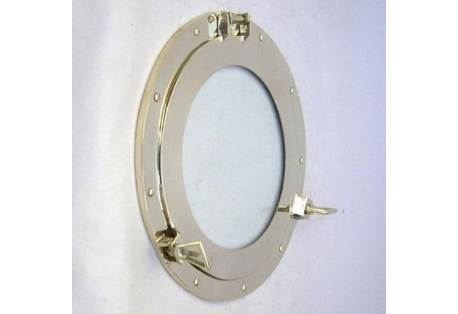
Brass Porthole Glass, 15"
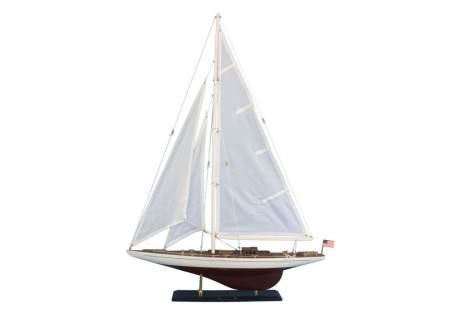
"Ranger" Wooden Model Sailboat Decoration "Ranger" Wooden Model Sailboat Decoration
Dimensions: 24" L x 4" W x 35" H Dimensions: 24" L x 4" W x 35" H

1900's Large America's Cup Defender... 1900's Large America's Cup Defender...
Dimensions: 68.1 L x 9.1 W x 65.5'' H Inches Dimensions: 68.1 L x 9.1 W x 65.5'' H...
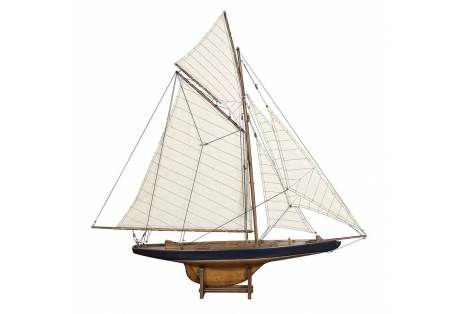
1901 America's Cup J Class Yacht Model... 1901 America's Cup J Class Yacht Model...
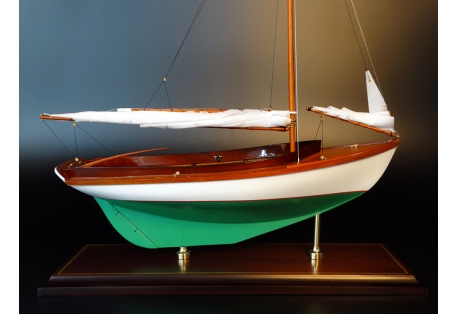
1914 Herreshoff 12 1/2 Boat Model 1914 Herreshoff 12 1/2 Boat Model
Dimension: 18"L X 21.2 High Dimension: 18"L X 21.2 High
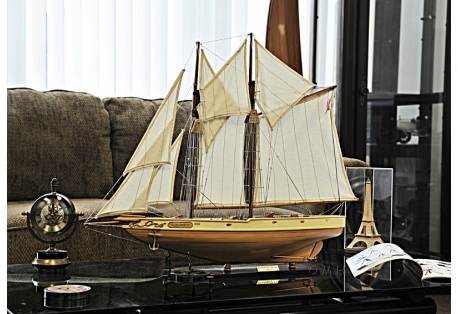
1921 Schooner Bluenose Wooden Model 1921 Schooner Bluenose Wooden Model
Dimensions: L: 29.5 W: 5 H: 24 Inches Dimensions: L: 29.5 W: 5 H: 24 Inches
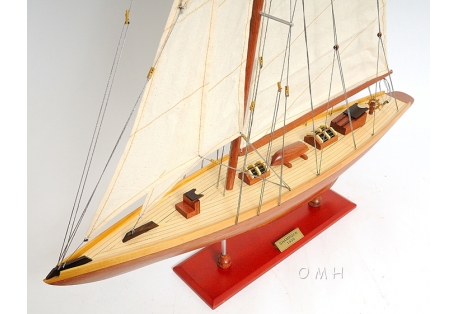
1930 Americas Cup J Class Shamrock... 1930 Americas Cup J Class Shamrock...
Dimensions: L: 32 W: 6 H: 38 Inches Dimensions: L: 32 W: 6 H: 38 Inches
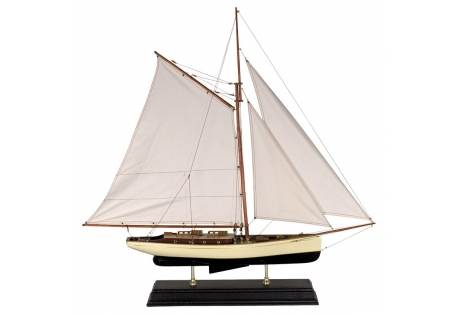
1930's Classic Design Yacht Model 1930's Classic Design Yacht Model
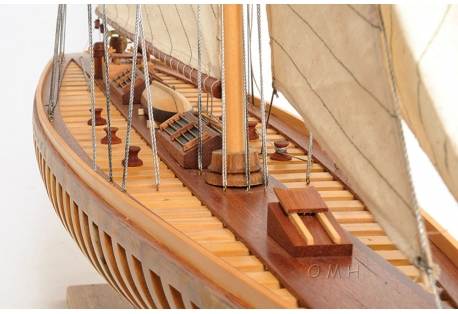
1930's Shamrock V America's Cup J Class... 1930's Shamrock V America's Cup J Class...
Dimension: L: 38 W: 7 H: 46 Inches Dimension: L: 38 W: 7 H: 46 Inches
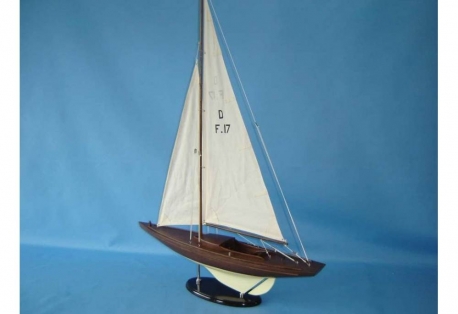
1930'S Classic Dragon Keelboat Olympic... 1930'S Classic Dragon Keelboat Olympic...
Dimensions: 30" L x 7" W x 40" H Dimensions: 30" L x 7" W x 40" H
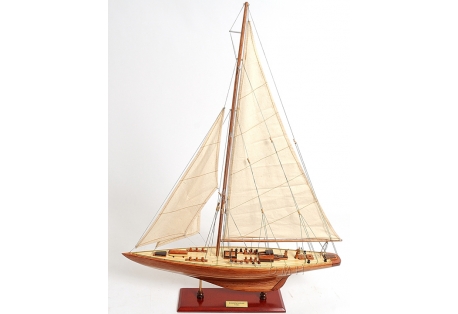
1934 J Class Endeavour Americas Cup Sailboat 1934 J Class Endeavour Americas Cup Sailboat
Dimensions: L: 24 W: 5 H: 31 Inches Dimensions: L: 24 W: 5 H: 31 Inches
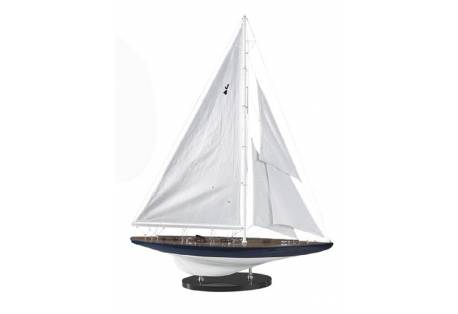
1934 J-Class Yacht Rainbow Model 1934 J-Class Yacht Rainbow Model
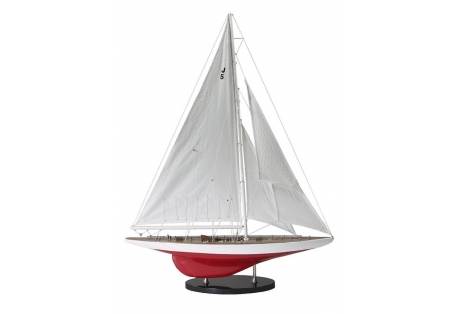
1937 America's Cup J Yacht Ranger 1937 America's Cup J Yacht Ranger
Length: 25.6. Height: 34. Width: 5.7 Length: 25.6. Height: 34. Width: 5.7
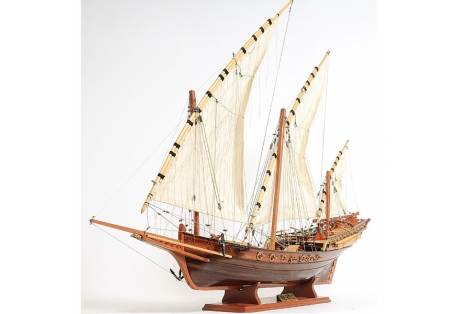
35" Xebec Wooden Model Ship 35" Xebec Wooden Model Ship
Dimension: L: 35 W: 7 H: 27 Inches Dimension: L: 35 W: 7 H: 27 Inches
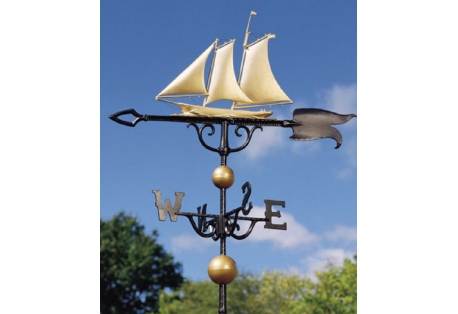
46" Sailboat Weathervane 46" Sailboat Weathervane
Dimensions: 19.25" x 33" x 43.75" Dimensions: 19.25" x 33" x 43.75"
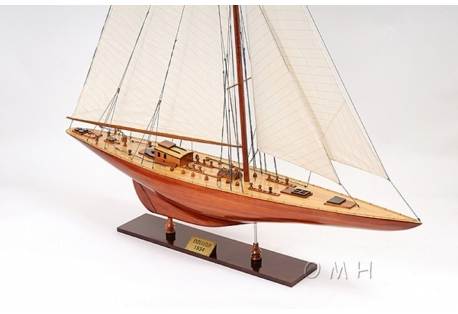
6 Feet Very Large America's Cup Yacht... 6 Feet Very Large America's Cup Yacht...
Dimensions: L: 60 W: 10.8 H: 72 Inches Dimensions: L: 60 W: 10.8 H: 72 Inches

8 Feet XXL Bluenose ll Schooner Hand Made... 8 Feet XXL Bluenose ll Schooner Hand Made...
Dimensions: L: 100 W: 15 H: 84 Inches Dimensions: L: 100 W: 15 H: 84 Inches
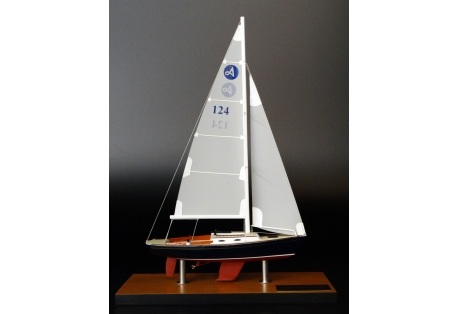
Alerion Express 28 Alerion Express 28
desktop of 8"Alerion Express in length, presented in acrylic display case for desktop of 8"Alerion Express in...
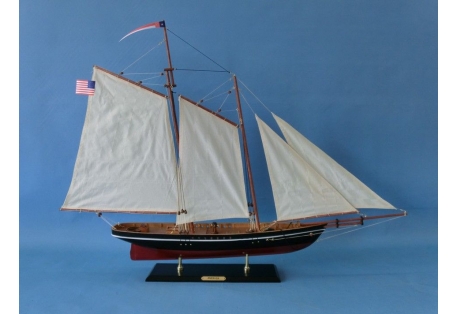
America Wooden Schooner Model Sailboat... America Wooden Schooner Model Sailboat...
Dimensions: 35" L x 6" W x 28" H (1:38 scale) Dimensions: 35" L x 6" W x 28" H...
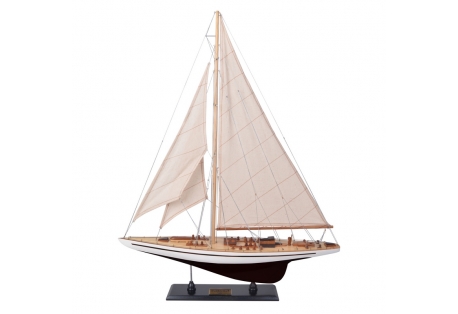
America's Cup 1933 Endeavour J Class Sailboat America's Cup 1933 Endeavour J Class Sailboat
Dimensions: 24" long, 4 1/2" wide and 31 1/2" tall. Dimensions: 24" long, 4 1/2" wide...
Model Sailboats
Bring endless summer into your home or place of work with our large model sailboats . We provide unique and upscale wooden sailboat models and America's cup yacht model. We have it all, handcrafted wooden famous sailing boats and historic tall ship models . All model boats that we sell are fully assembled meticulously and professionally.
Gonautical shop is a family owned business who employs only the best artisans in the model ships and sailboats building industry . Our uniquely designed products are sold at the best prices, with an emphasis on personal service and on time delivery for pre-assembled ship models . Our reputation is built on pleasing our customers.

IMAGES
VIDEO
COMMENTS
These sailing vessels have a rich legacy as vessels that are sought-after due to their very deep draft and average beam, traits that make them exceptionally appropriate for racing. Within the scope of our existing inventory, racer sailing vessels demonstrate an average passenger capacity of 9 individuals, with a maximum threshold extending to ...
2024 Beneteau First 24 SE. * Price displayed is based on today's currency conversion rate of the listed sales price. Boats Group does not guarantee the accuracy of conversion rates and rates may differ than those provided by financial institutions at the time of transaction. Find Sail Racer boats for sale in United States.
ZEPHYRUS. 1995 Fenwick Williams/Alden 21. SOLD. GOT-CHA. 1935 Herreshoff 12-1/2 - SOLD. TIMBERWIND. 1931 Classic Portland Pilot Schooner - SOLD. Maine wooden sailboats for sale by Artisan Boatworks. Click on any boat to view the listing and get in touch.
There is a unique feeling a sculler experiences with the first strokes taken in classic wooden racing single. Moving with grace over the water striking perfect balance. The VAK Shell is a timeless expression of wooden boat building. Two versions are available, which offer the same performance and construction in a choice of hard decks.
The Pacific Class was the first one-design racing sloop constructed for Southern California waters, and over the past 90 years this class of about 80 boats has sailed into yachting mythology. WINGS, hull No. 8 and perhaps the oldest hull in existence, is on display at the San Diego Maritime Museum.
These RC Sailboats have a beautiful wooden boat hull, and are fun and easy-to-build for all ages. 37 in long. 5 ft tall. 4 lbs. Finest Wooden Model Sailboats available in the world today. ... For sailing and racing, we suggest ages 8 through adult. The T37 RC Sailboat kit is quick to build (around 20 hours building time) and is a great ...
The Gold Cup race was conducted on the Hudson River in 1904 with the winner's boat topping out at an average, straight-line speed of 23 miles per hour. Contestants in those days drove lightweight boats made of wood, which is what O'Connor still prefers—mostly. Wooden boats dominated racing for the next 30 years.
A Racing Sailboat Built for racing and launched in 1984. Close. Previous Boat. Next Boat. Italmas Tattler II Star's Echo Morgana Silvan Best Yet Moody Blue Zoo Patrician Saint Barbara Star Feather Pulling Boats ...
The cost of a wooden sailboat can vary widely depending on several factors such as size, design, and level of customization. A small wooden sailboat, such as a daysailer, can cost anywhere from $10,000 to $30,000. A larger wooden sailboat, such as a cruising sailboat, can cost upwards of $100,000 or more.
Tippecanoe Boats produces the finest wooden radio controlled and toy sailboat models available anywhere in the world today. We have over 70,000 boats sailing around the world ranging from a 5 inch toy boat to a 65 inch RC boat. ... RC Sailboat: T27 Racing Sloop. from $375.00. Tippecanoe Boats . RC Sailboat: T37 Racing Sloop. from $465.00 ...
The Woodstock of Sailboat Racing. For classic yacht sailors, the Eggemoggin Reach Regatta is much more than a race. There can be a lot of egos, yelling, screaming and surly behavior in the sailboat racing world, especially when a boat doesn't cross the line in first place. But in wooden sailboat racing there's an appreciation for the yachts ...
The beauty of a wooden boat on the water is source of great pleasure, and both our RC sailboats and our free-sailing models are fast and fun and sail excellently. Build our radio controlled schooner or our ultra light RC trimaran. ... the T27 RC Racing Sailboat, the T37 RC Racing Sailboat, The T47 Fairharbor RC Schooner, the T50 RC Racing Yacht ...
The Center for Wooden Boats is a registered 501(c)(3) nonprofit museum based in Seattle, WA. Hours. Tue 10 am - 5 pm. Wed 10 am - 5 pm. Thu 10 am - 5 pm. Fri 10 am - 5 pm. Sat 10 am - 5 pm. Sun 10 am - 5 pm. We offer a variety of Boats and other Marine Gear for Sale. Our inventory changes frequently so call for current listings.
Keel raised: 0.8-1.0m (2ft 8in-3ft 3in) Displacement: 1.5 tonnes. Ballast: 600kg (1,322lb) Engine: Torqeedo Cruise 2.0FP. Price: €120,000 (ex. VAT) The LA 28 is a beautiful, cold-moulded wooden ...
Skerry. Sailing Dinghies. Faering Cruiser. Kayak-Canoe Sailrig. Pacific Proas. Independence R/C Model. Our collection of sailboat kit designs from 8 to 31 feet. Strong, lightweight okoume plywood means strong, lightweight sailing craft. Most of our sailboats can be cartopped, all of them sail beautifully, and all of them are easy to build.
Welcome to the Cocktail Class Wooden Boat Racing Association The CCWBRA was founded in 2010 to encourage and organize racing in the Cocktail Class Runabout. Based on the out-board racer SKUA, an 8 ft. plywood skimmer designed in 1939 by Charles MacGregor, the Cocktail Class Runabout is an economical, easily constructed and exciting runabout.
A wooden sailboat can cost around $1,000 to build. (Source: Instructables) The boat is typically built from 4×8 sheets of plywood and measures 8 feet in length. (Source: Instructables) Various tools such as a pull-saw, table saw, router, sander, and drill are needed for building a wooden sailboat. (Source: Instructables)
Annapolis Classic Wooden Sailboat Race, Annapolis, Maryland. 316 likes. A fun gathering of classic wooden sailboats, showcasing history and elegance. The Classic Wooden Sailboat Race is open to...
38 Feet 1932 Gar Wood Raceboat "Miss America X". Arguably the most prolific and significant raceboat and American history, "Miss America X", U-10, was the finale in Garfield Wood's dominance of the powerboat racing and world record setting career. Between 1920 and 1933, Gar Wood's boats won each Harmsworth Trophy Contest, the world's most ...
The Tippecanoe Wooden Toy Sailboats are all beautiful boats with solid Western Red Cedar hulls, zinc keel castings, solid brass fittings, and two nylon spinnaker cloth sails. These toy boats range in size from 12 to 18 inches long. They really sail and cannot be capsized. A great introduction to a lifetime of sailing!
We have it all, handcrafted wooden famous sailing boats and historic tall ship models. All model boats that we sell are fully assembled meticulously and professionally. Gonautical shop is a family owned business who employs only the best artisans in the model ships and sailboats building industry . Our uniquely designed products are sold at the ...
Check out our wooden sailboat model selection for the very best in unique or custom, handmade pieces from our ornaments shops. ... wooden sailboat,handmade yacht model,home decor, office decor,racing yacht (63) Sale Price $161.33 $ 161.33 $ 189.80 Original Price $189.80 (15% off ...
Wooden Racing Wood Sailboat (1 - 18 of 18 results) Price ($) Any price Under $25 $25 to $100 $100 to $250 ... The Regatta, colorful sailboats racing, Seascape featuring original watercolour Art PRINT on a wooden card or Block, open back wall hanging (226) $ 18.00 ...